Ferret

The ferret (also known as domestic polecat) is a social creature who enjoys a lot of attention. They are somewhat near-sighted and have poor hearing, which makes them rely on their sense of smell and touch. Their metabolism is extremely high, so they need to eat about 10 times a day.
Black-tailed Prairie Dog
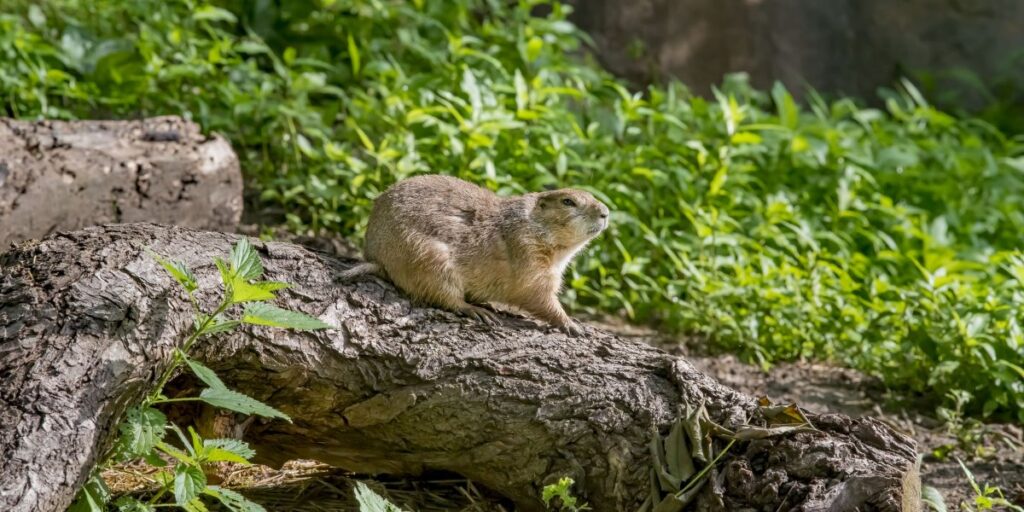
This mammal is a species of ground squirrel, but they got the name “dog” due to their alarm bark. Prairie dogs use a range of vocalizations to communicate about predators. When a prairie dog detects danger, it will retreat to a burrow mound and give warning with a series of yips.
Ring-tailed Lemur

The tail of a ring-tailed lemur has 13 alternating black and white bands and can be up to 2 feet long. They move quadrupedally (on all fours), holding their tails almost completely vertically as they move, with the tip of the tail curving away from the body and forming the shape of a question mark.
Bushbaby
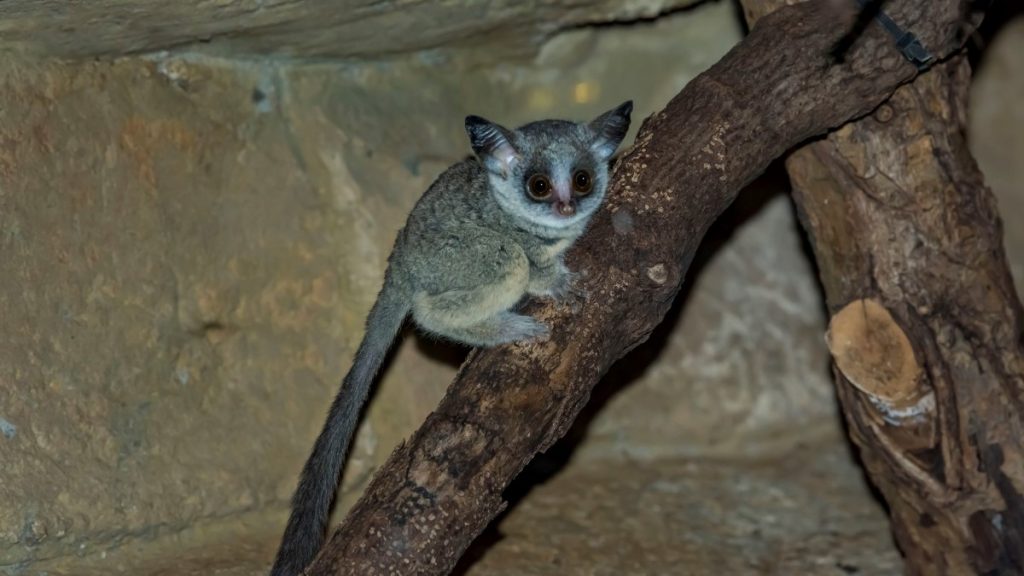
Bushbabies are nocturnal arboreal primates that live in trees. They’re named for their call, which sounds like a human child crying. Proportionate to body size, bushbabies have the largest ears of all primates — and their ears can even move independently of one another.
Brown Bear
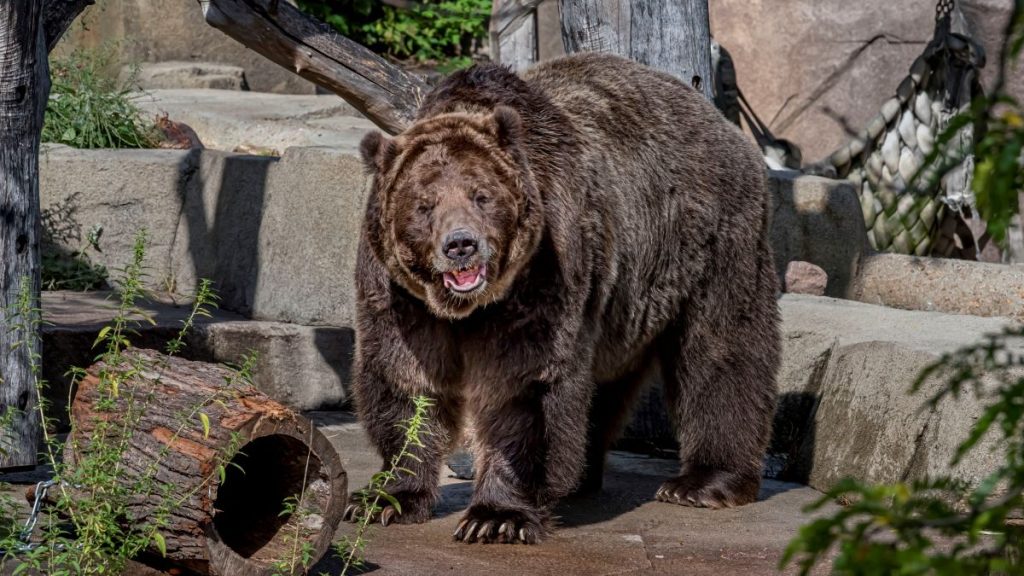
Brown bears are actually found in a variety of shades, from a light cream color to almost black. They spend 4 to 6 months a year curled up deep in sleep in a den. This is known as their “winter sleep,” although not a true hibernation — brown bears will wake up if disturbed. And […]
Impala
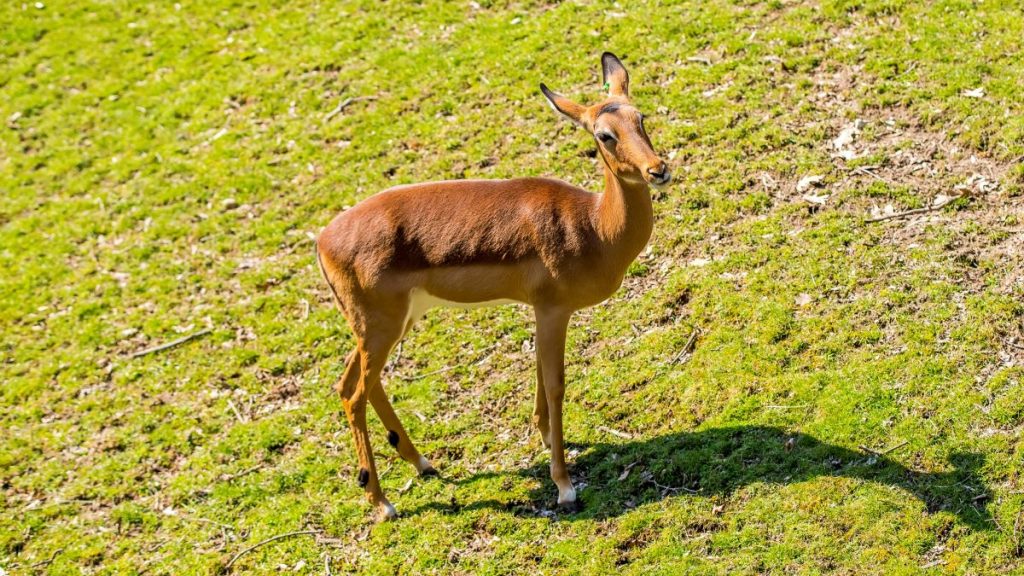
Impalas are known for their spectacular leaps of up to 9 feet high and 11 feet long. They can leap over bushes and even other impalas! And when startled or threatened by a predator, impala herd members explode in all directions, leaping from side to side, making it difficult for a predator to follow.
Vampire Bat
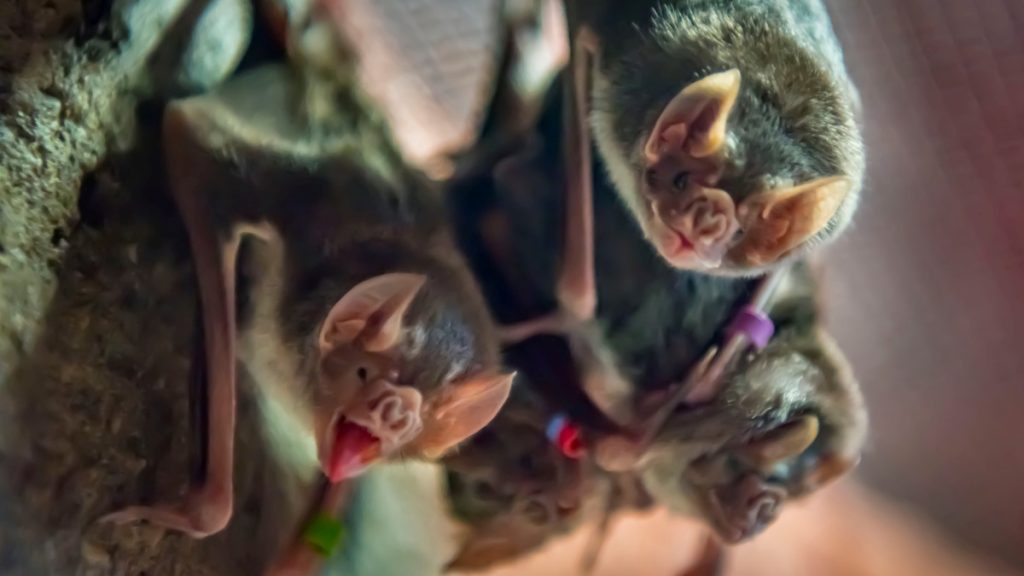
Bats are the only mammals that can fly. Unlike other species of bats, vampire bats can walk, run, and jump, which helps them catch their prey. They feed on blood from cows, pigs, horses, and birds.
Norwegian Fjord Horse
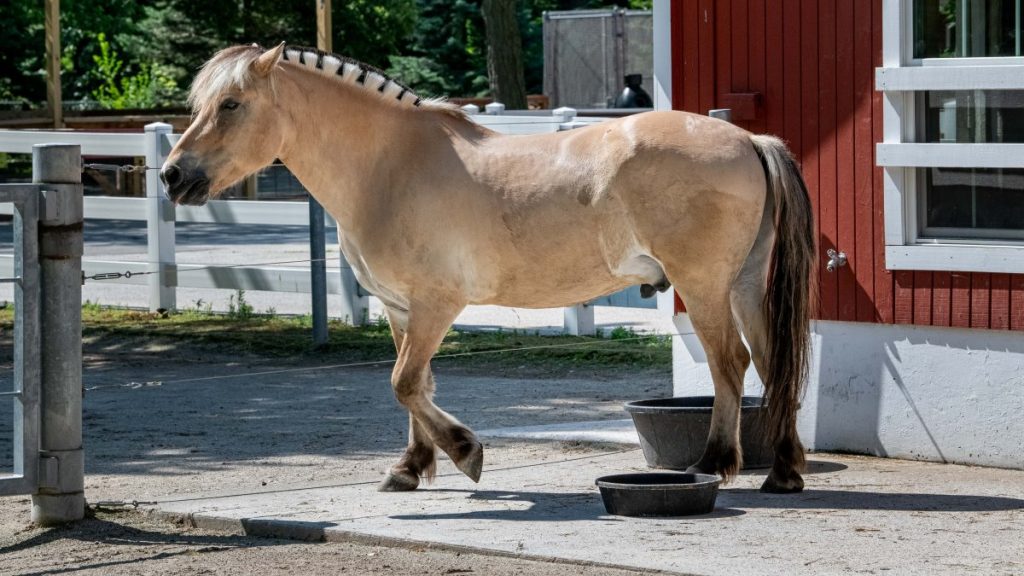
The Norwegian fjord horse is a small but strong breed. They have a striking-colored mane with light-colored hair on the edges and darker hair in the center. The mane is usually cut short so that it will stand up straight and the coloration can be seen.
Brown Swiss
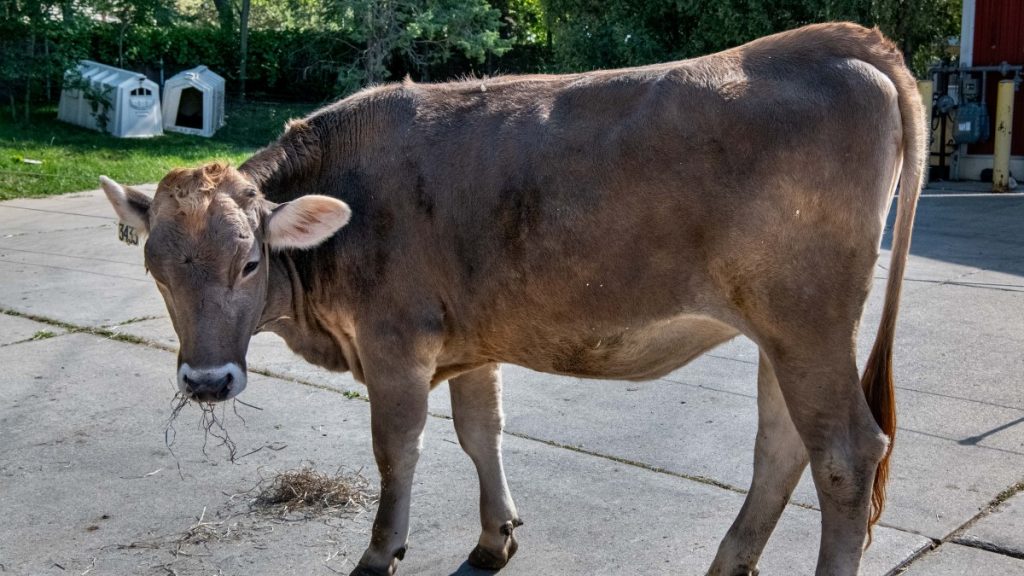
This breed was originally imported to the U.S. in 1869. The milk from the brown Swiss is ideal for cheese, which makes them one of the most popular breeds in the world for cheese making. Wisconsin is one of the states that has the largest brown Swiss populations in the U.S.
Sicilian Donkey
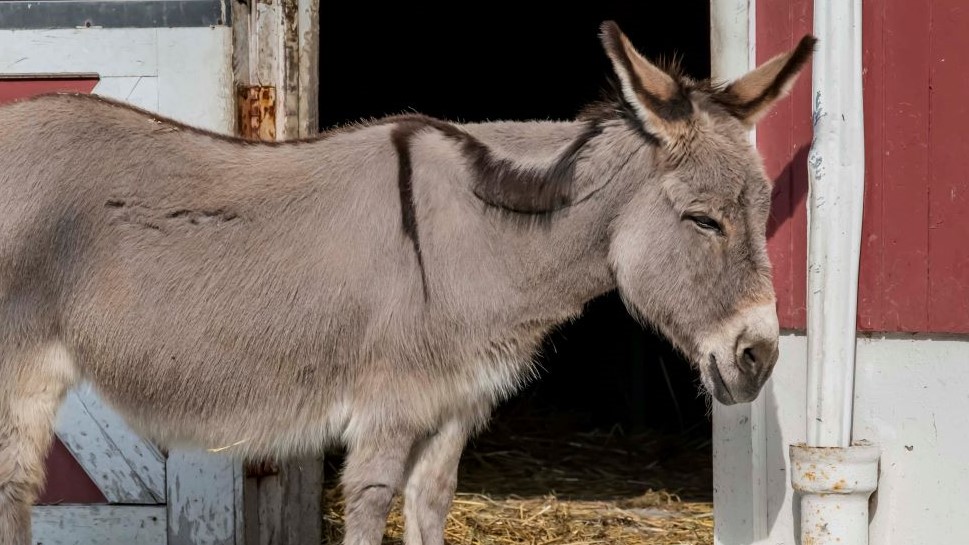
These donkeys — also known as miniature Mediterranean donkeys — are native to Sardinia and Sicily, although the two types do not differ. Their average height is about 33 to 34 inches. By nature, they are one of the friendliest and most affectionate animals of its type.
Jersey
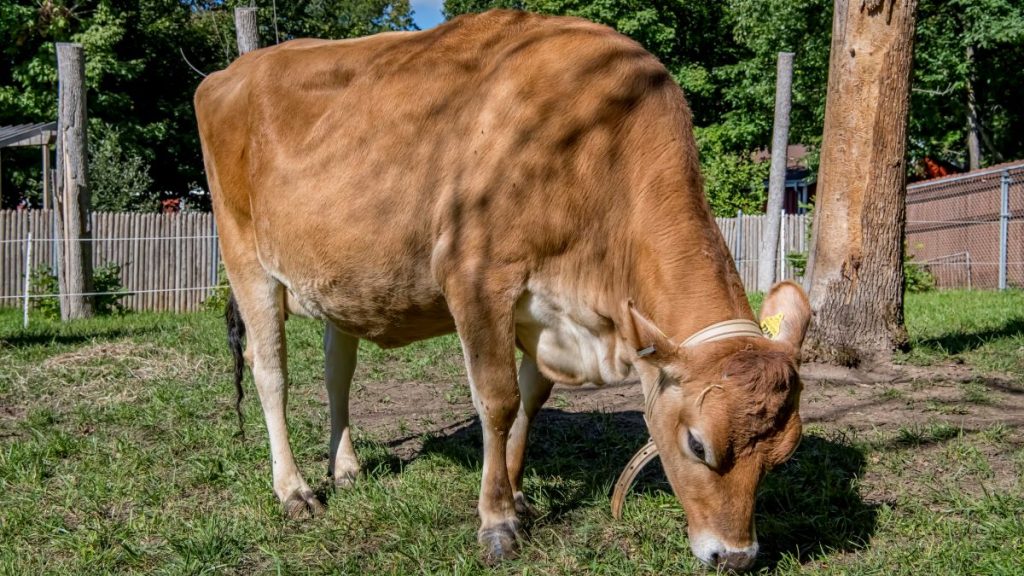
There are many ideas about where Jersey cattle came from. Some think the cattle came from African stock, which explains why they tolerate more heat than other breeds. Others think the cattle may have migrated to the island from India on a land bridge that used to connect the island to the French mainland. The […]
Belted Galloway
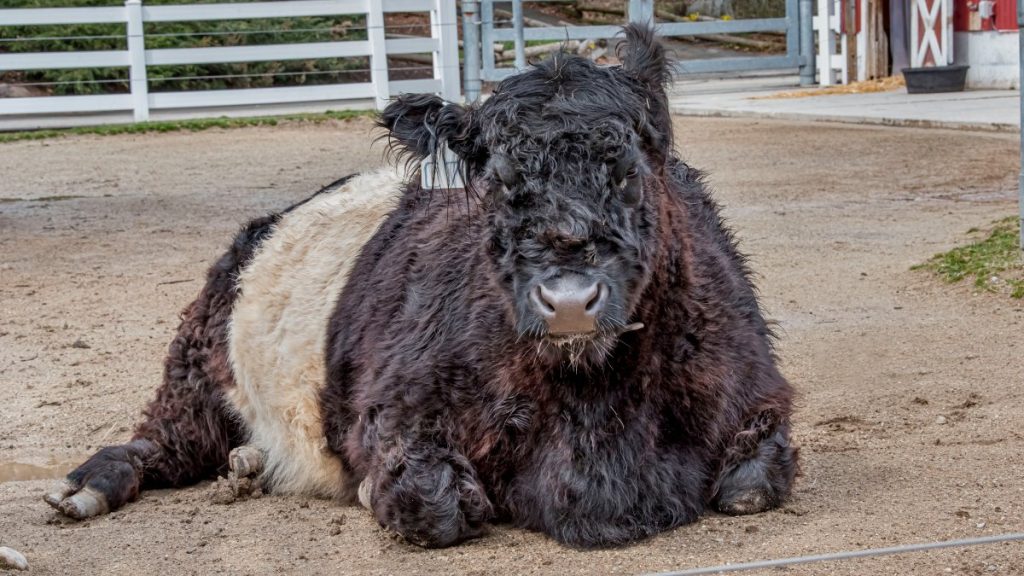
Belted Galloways, often called “Belties,” were imported to North America, starting in the 1940s. Their most common color is black with a white belt, but they are also found in a red and grayish-brown color with a white belt. Their hardiness, gentle temperament, and attractive coloring make them a favorite for beginner farmers.
Red & White Holstein
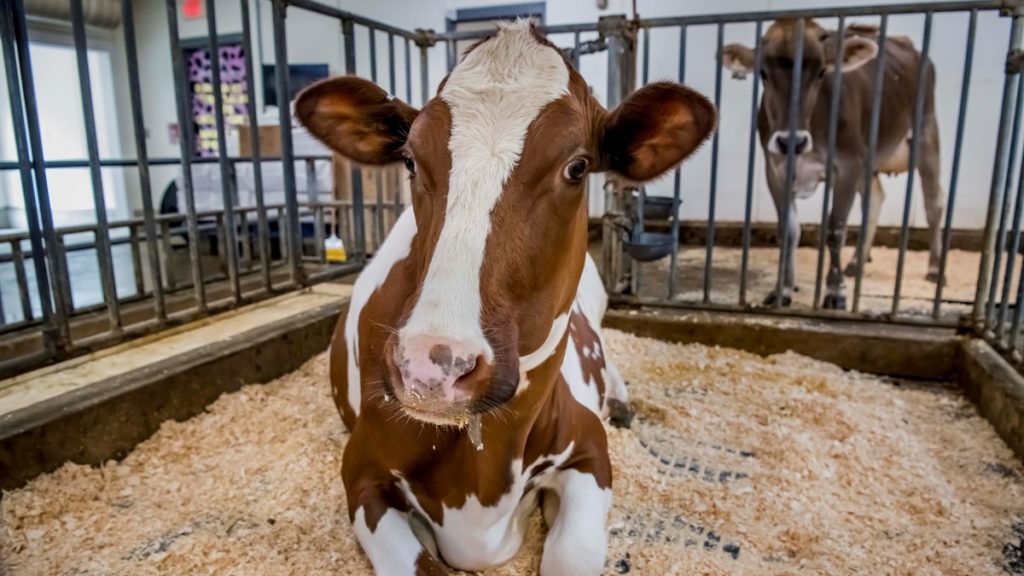
This dairy cow is marked by red and white spots. Holstein cows are known for high milk production and the average cow produces around 2,900 gallons of milk each milking cycle. A milking cycle is about one year.
Ayrshire
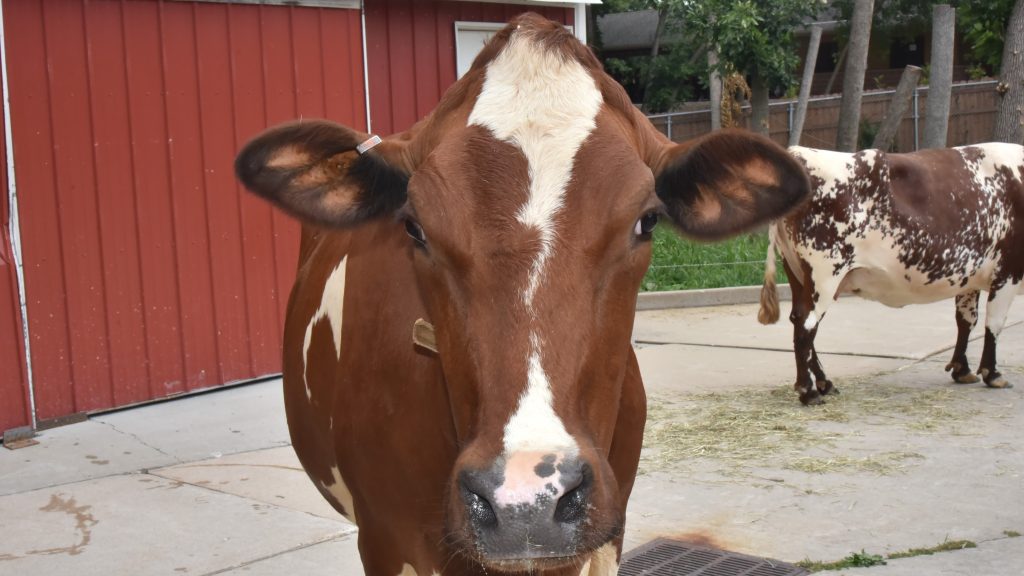
Ayrshire are known for their red and white color pattern. The red and white color can be almost solid or have a broken mix. Their horns are light-colored with dark tips and can be over a foot in length, when allowed to grow.
Greater Malayan Chevrotain
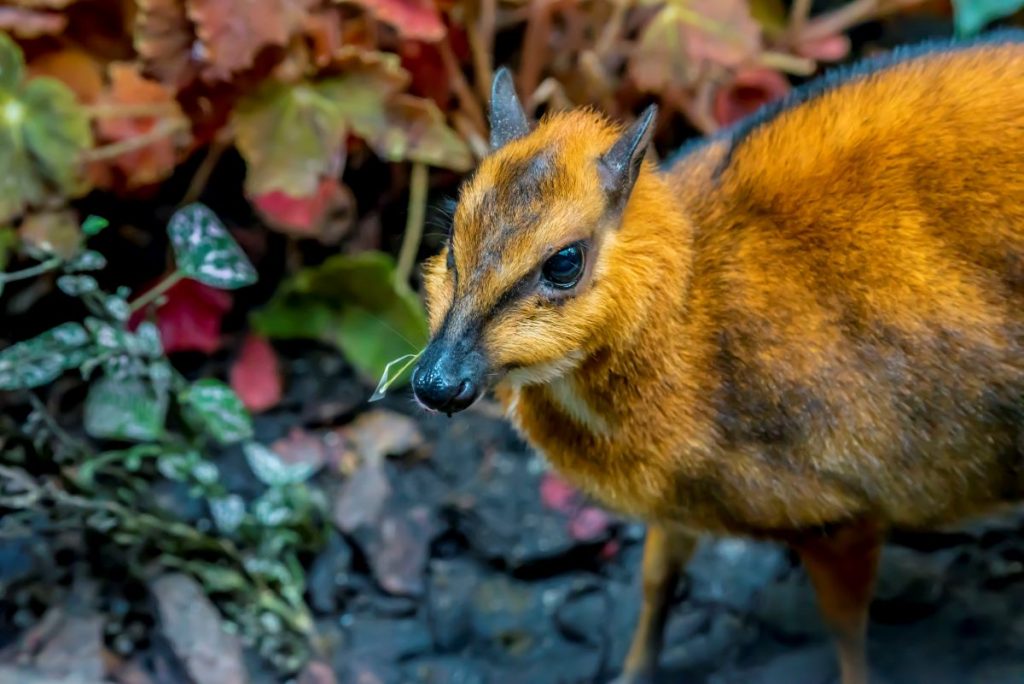
Greater Malayan chevrotains are the smallest living hooved animals and are known as “living fossils” because they’ve changed little in 30 million years. They’re also commonly referred to as “mouse deer.” When standing on all four legs, the chevrotain’s hind end is actually higher than its front quarter. They live in the undergrowth of lowland […]
Pygmy Slow Loris
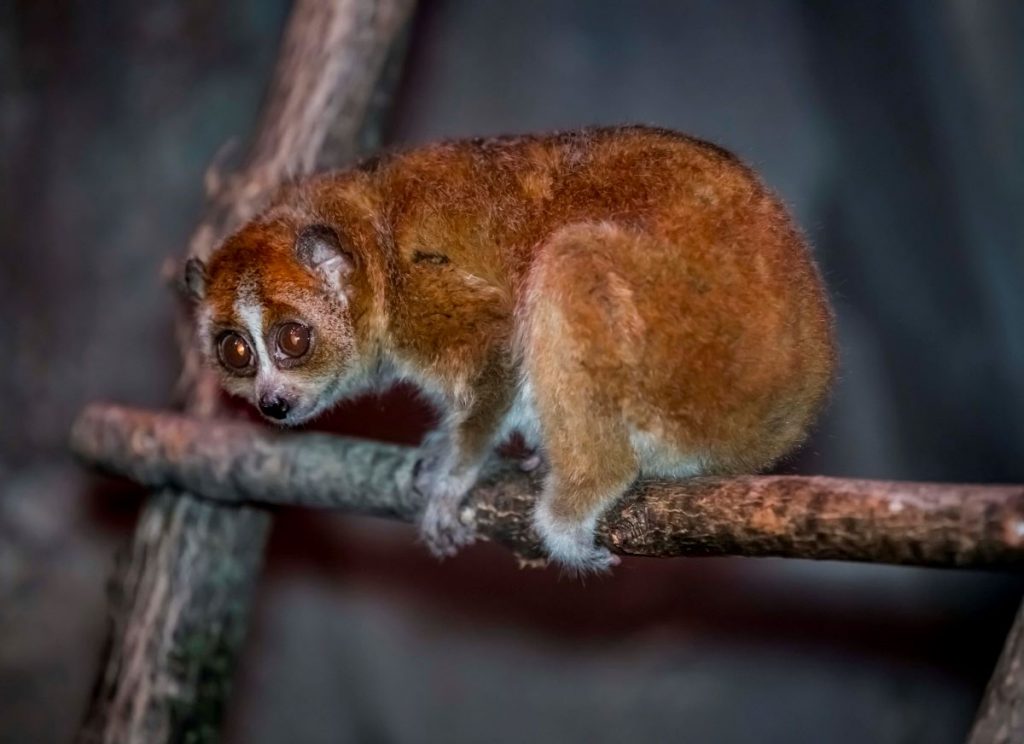
Pygmy slow lorises can be easily identified by their extremely-large brown eyes, which help them spot prey in the dark. They are the only venomous primate — glands inside their elbows secrete compounds that mix with their saliva to deliver a toxic bite to rivals and predators. Unfortunately, pygmy slow lorises sold as exotic pets […]
De Brazza’s Monkey
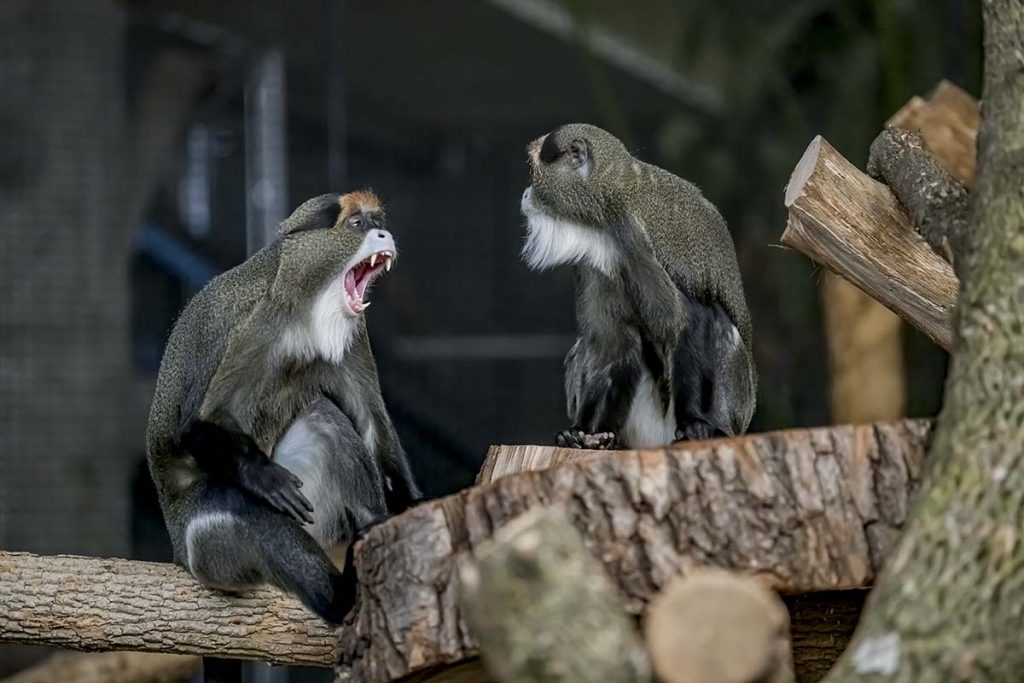
De Brazza’s monkeys are arboreal (live in trees). They choose habitats near water and are good swimmers. To protect themselves while foraging on the forest floor, De Brazza’s monkeys store food in their large cheek pouches to eat later when they are in a safe place. They are important seed dispersers in their habitat.
Caribou
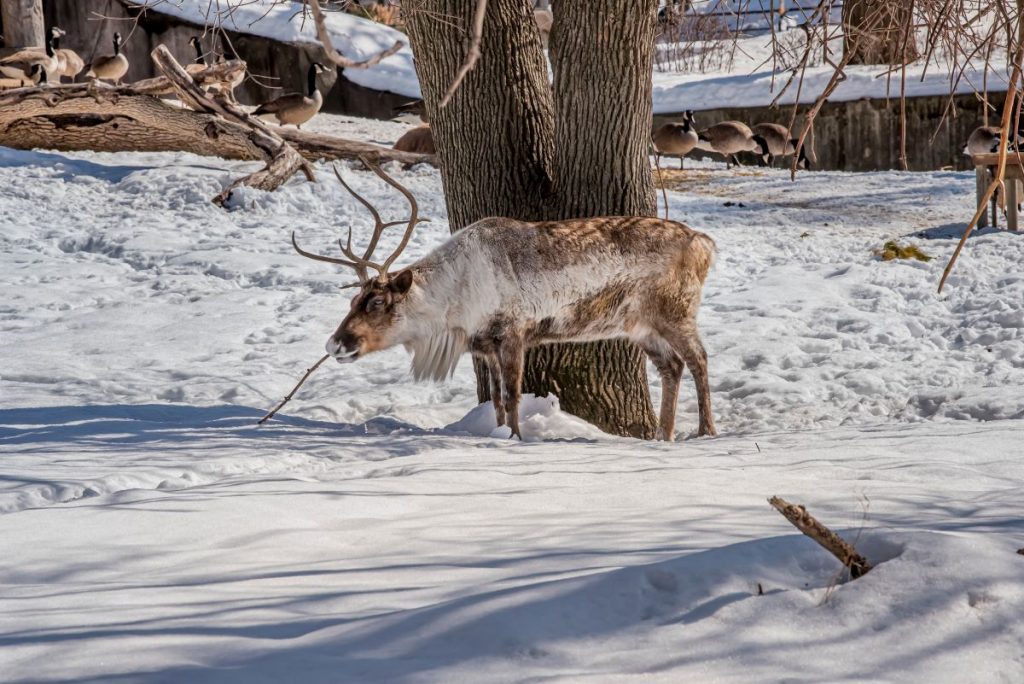
Caribou and reindeer are actually the same species, known as “reindeer” in Europe and as “caribou” in North America. “Reindeer” typically refers to domesticated individuals, even in North America. Both male and female caribou have antlers, and in comparison to body size, they’re the largest and heaviest antlers of all living deer species. They dig […]
Prevost’s Squirrel
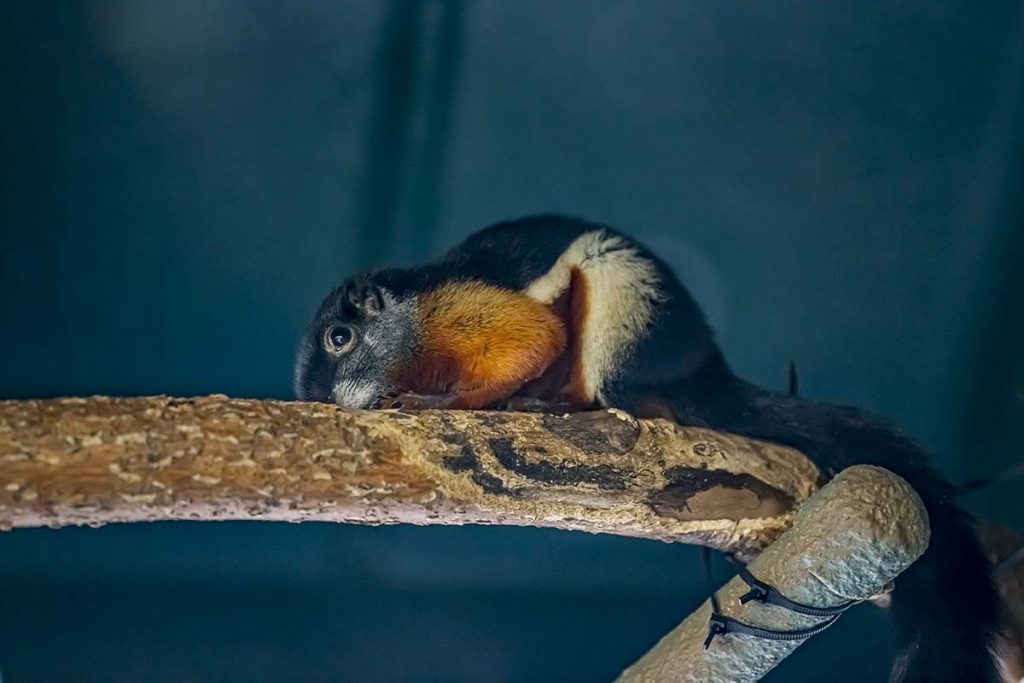
Prevost’s squirrels play an important ecological role in their forest habitat. They eat an assortment of seasonal fruits and disperse undigested seeds in their waste as they travel through the forest. The seeds sprout away from the parent plant and increase the survival of fruiting plant species. Like all rodents, their teeth never stop growing! […]
Scimitar-horned Oryx
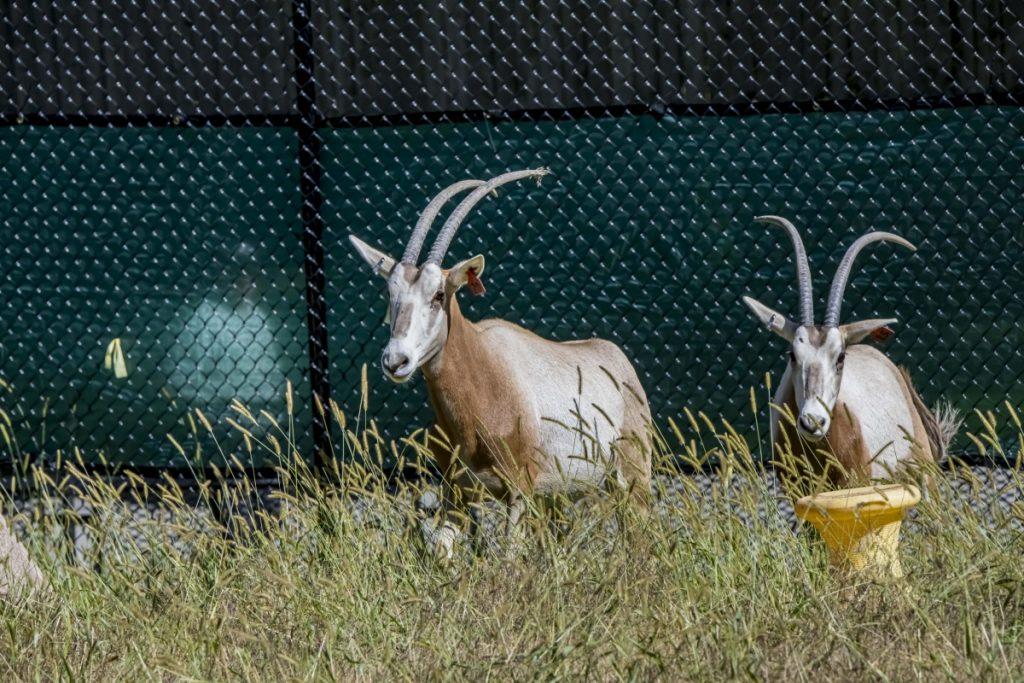
Both male and female scimitar-horned oryx have long, ridged, sharp-tipped and curved backward horns that grow to be several feet long. Their white coat helps reflect the heat of the desert, and their black skin and tip of the tongue protects against sunburn while enlarged hooves enable the oryx to walk easily on sand.
Red-ruffed Lemur
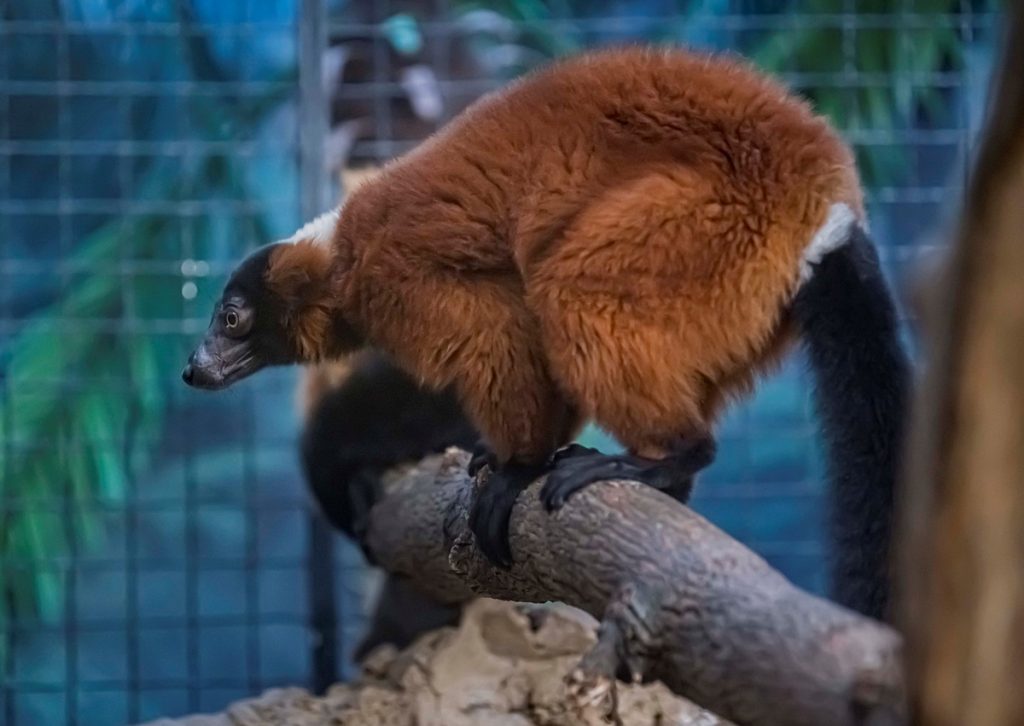
Red-ruffed lemurs are the world’s largest lemurs, living in female-dominated family groups of 2 to 16 animals. Red-ruffed lemurs are arboreal (live in trees) and very rarely descend to the ground. They are active during the day and spend most of their waking hours socializing and eating. They are critically endangered due to deforestation, hunting […]
Snow Leopard
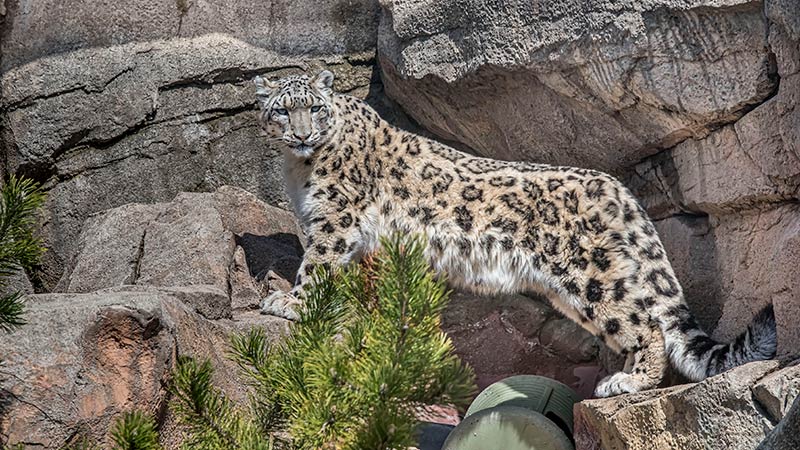
The cat’s huge paws have fur on the bottom that gives the leopard traction on the snow and protection from sharp rocks. The snow leopard’s long, thick, and luxurious tail acts as a built-in comforter when the cat wraps it around its body for added warmth. The tail is almost as long as its body!
Thomson’s Gazelle

Gazelles are extremely alert to sounds and movements, relying on visual awareness of one another to stay in contact. Their strong sense of hearing, sight, and smell balance its vulnerability and small size on the open plains.
Nigerian Dwarf Goat
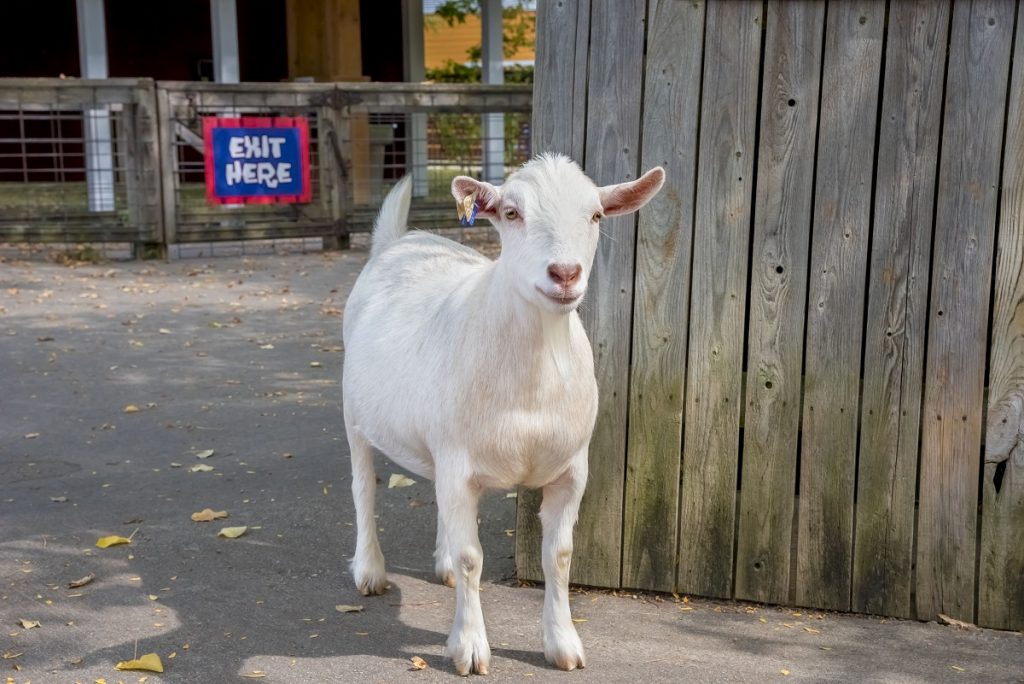
Previously thought to be pygmy goats, they are known for their small stature. Nigerian dwarf goats are ruminants, which means they chew cud regurgitated from the first stomach. In total, goats have four stomachs, just like a cow! On average, a doe Nigerian dwarf goat produces a half gallon of milk each day.
Kunekune Pig
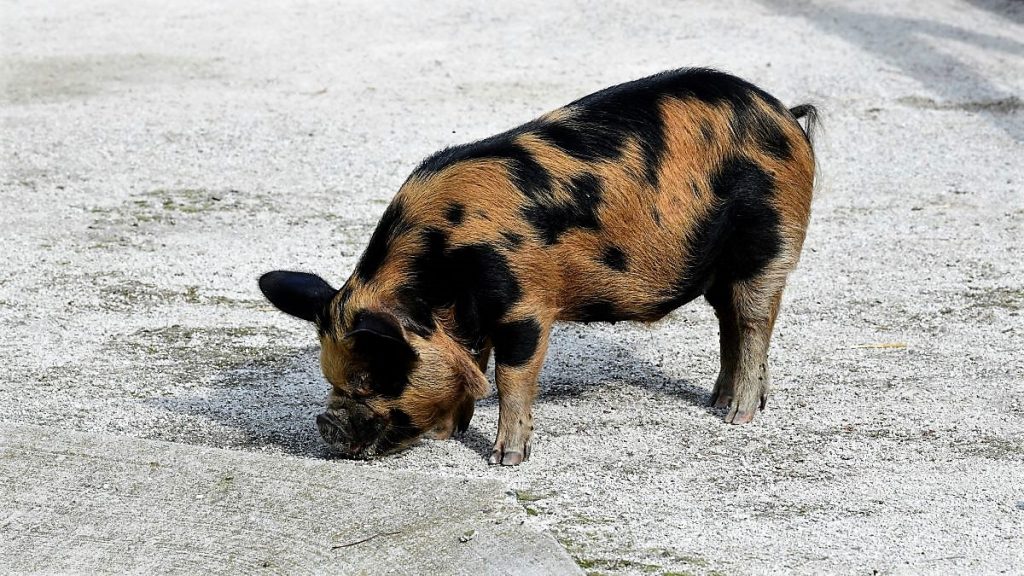
The kunekune breed (pronounced “cooney” “cooney”) first arrived in the United States in the 1990s. You’ll notice little tassels on their chin, which is just longer hair — a distinctive trait for this pig. They are also friendly and loving toward people.
American Guinea Hog
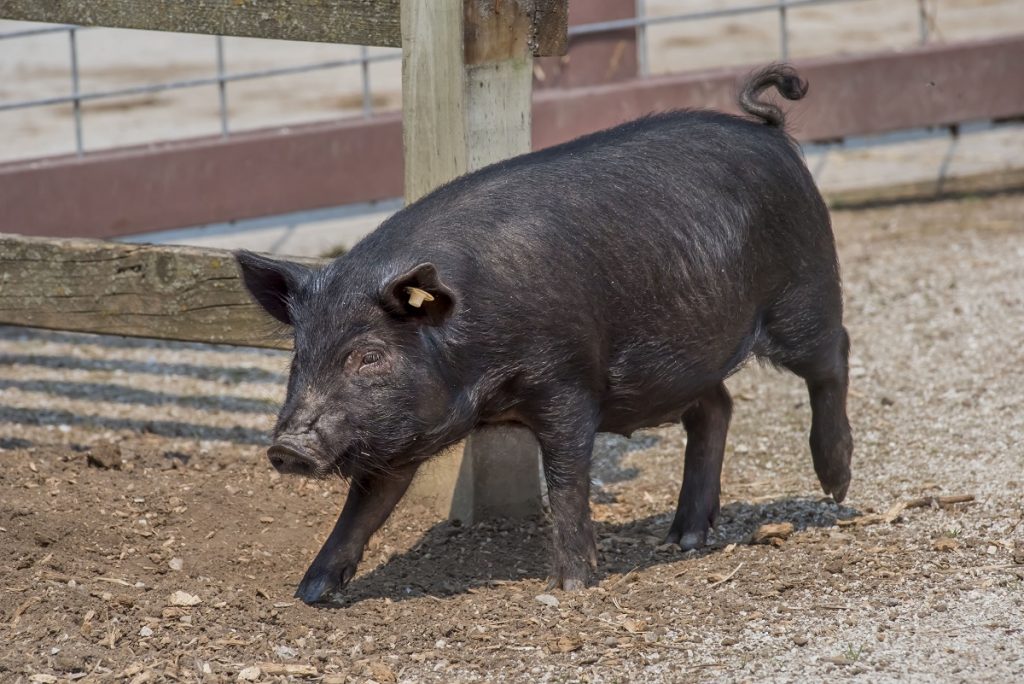
Despite their name, American Guinea hogs are native to the United States. After seeing their population decline throughout the early part of the twentieth century, American Guinea hog populations have increased in recent decades, as many new herds have been established throughout small farms. Pigs are curious and intelligent animals, and our Guinea hog receives […]
Prehensile-tailed Porcupine
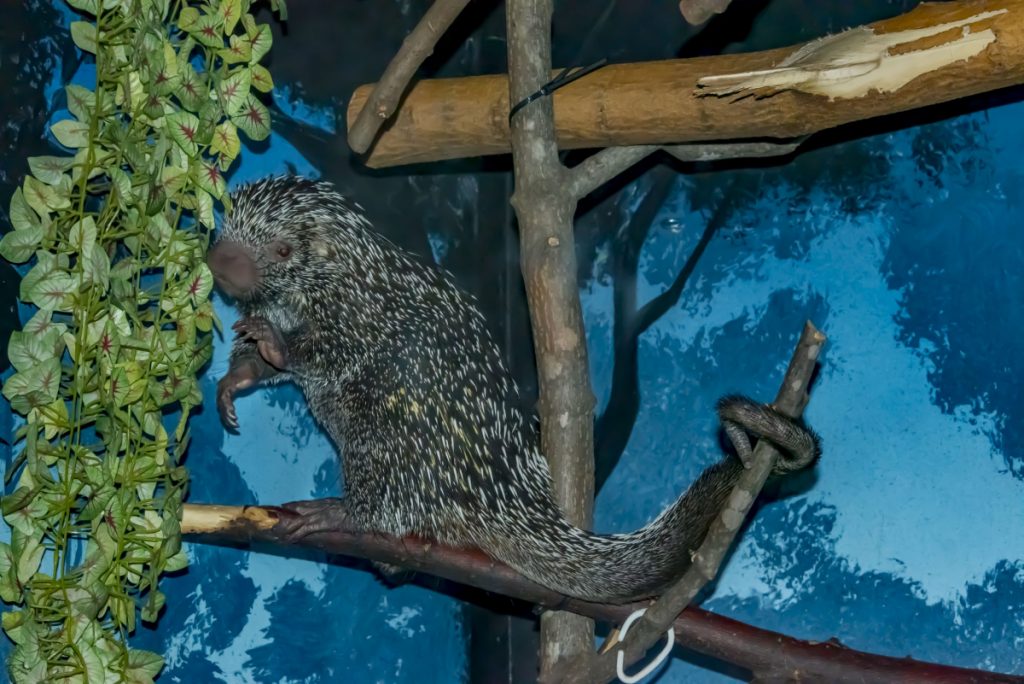
Prehensile-tailed porcupines are arboreal animals, spending most of their time in trees. These porcupines are also nocturnal, and are known to move to a new tree each day. The species is named after their prehensile tails, which they use for grasping and hanging in trees.
North American Porcupine
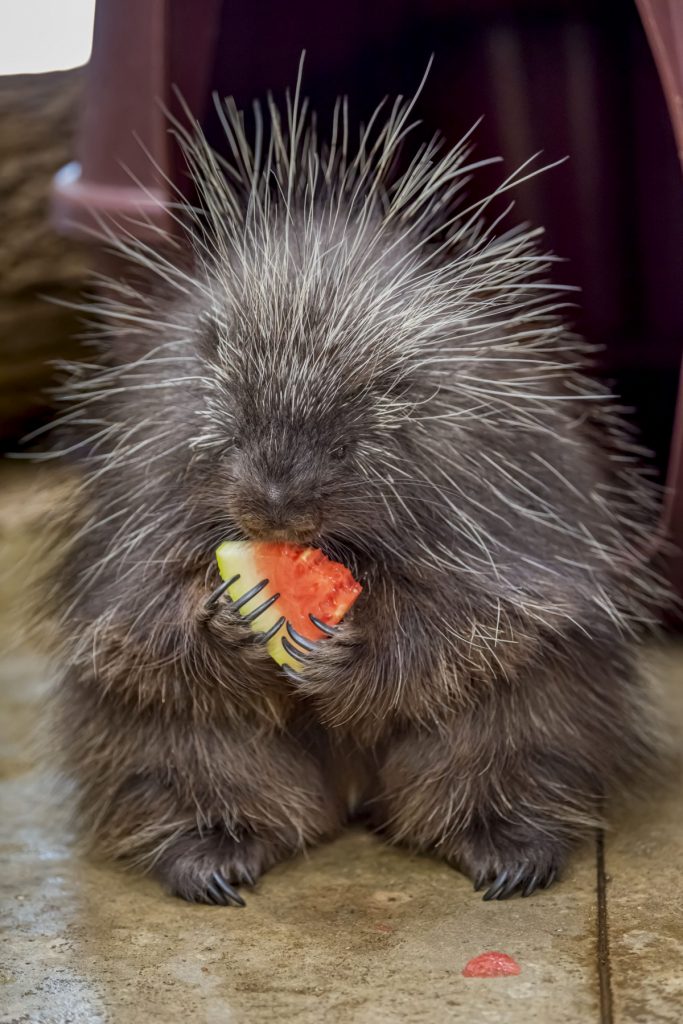
The porcupine’s most famous feature—the quill—is hollow, 2 to 3 inches (5 to 7 centimeters) in length, and lightly attached to the porcupine’s skin. Porcupines are covered in about 30,000 quills.
Harbor Seal
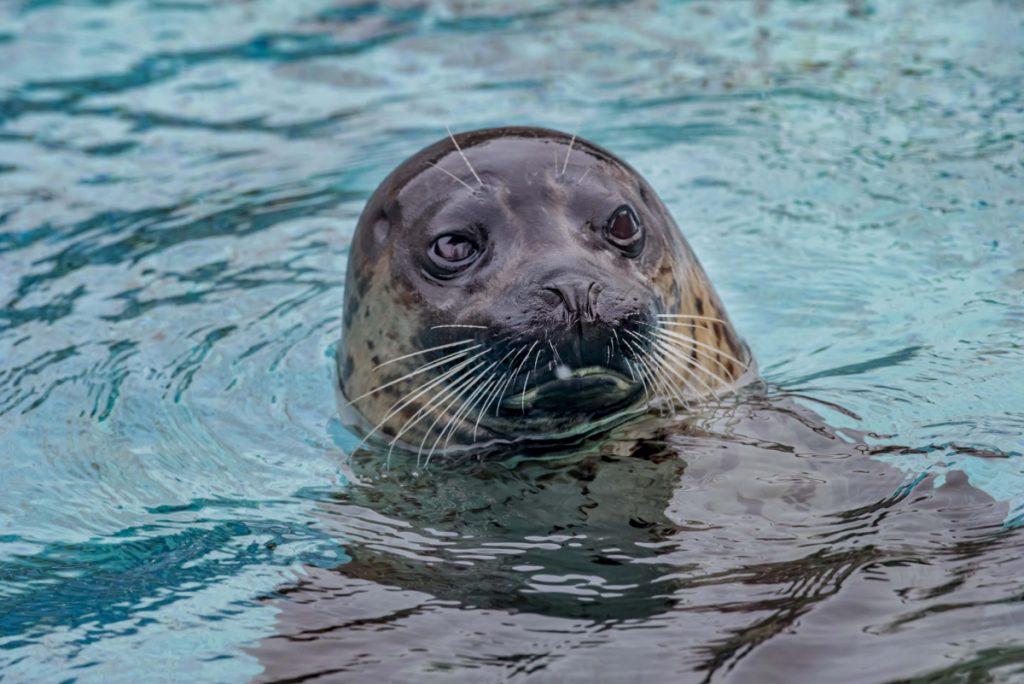
Harbor seals can dive to depths of 500 feet (152.4 meters) but depths of up to 1,460 feet (446 meters) have been recorded. They can remain submerged for up to 30 minutes at a time. During the winter, the blubber layer can account for up to 30 percent of a harbor seal’s body mass.
North American Elk
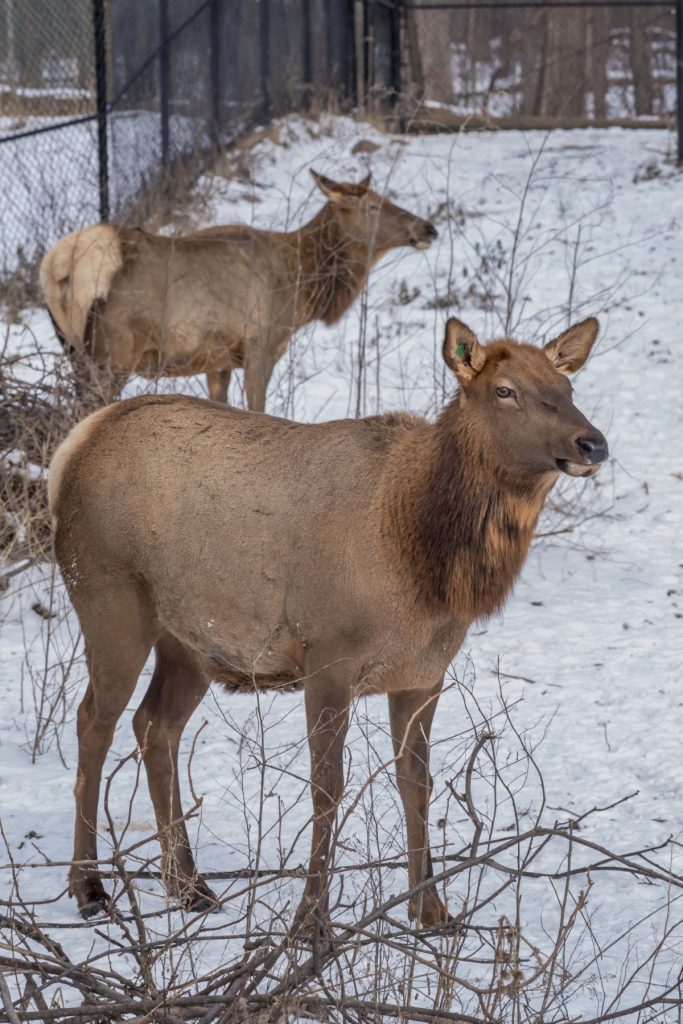
Elk are the most vocal deer in North America. The calves bleat, the females squeal or utter sharp barks, and the males bugle when in rut (mating season). Bugling is used to attract mates and advertise territories during the fall rutting season and can be heard for long distances.
Southern Three-banded Armadillo
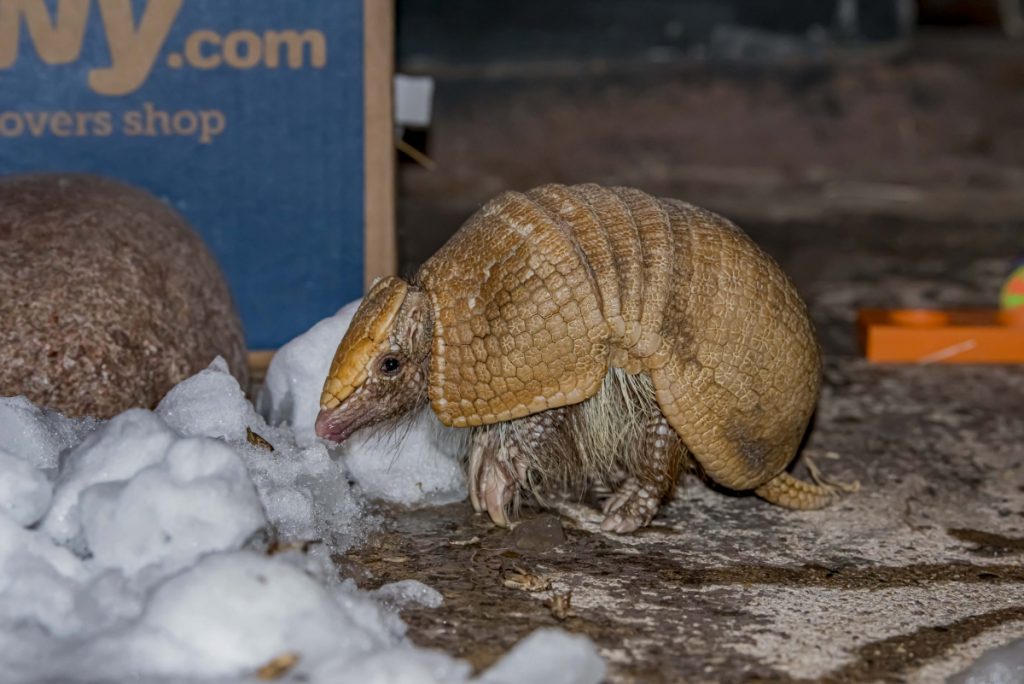
The only armadillos that can completely enclose themselves in their own shell by rolling into a ball. When threatened, they roll up into ball, leaving only a small opening between the shell edges. If the animal is prodded through the opening, it quickly snaps fully shut like a steel trap.
Straw-colored Fruit Bat
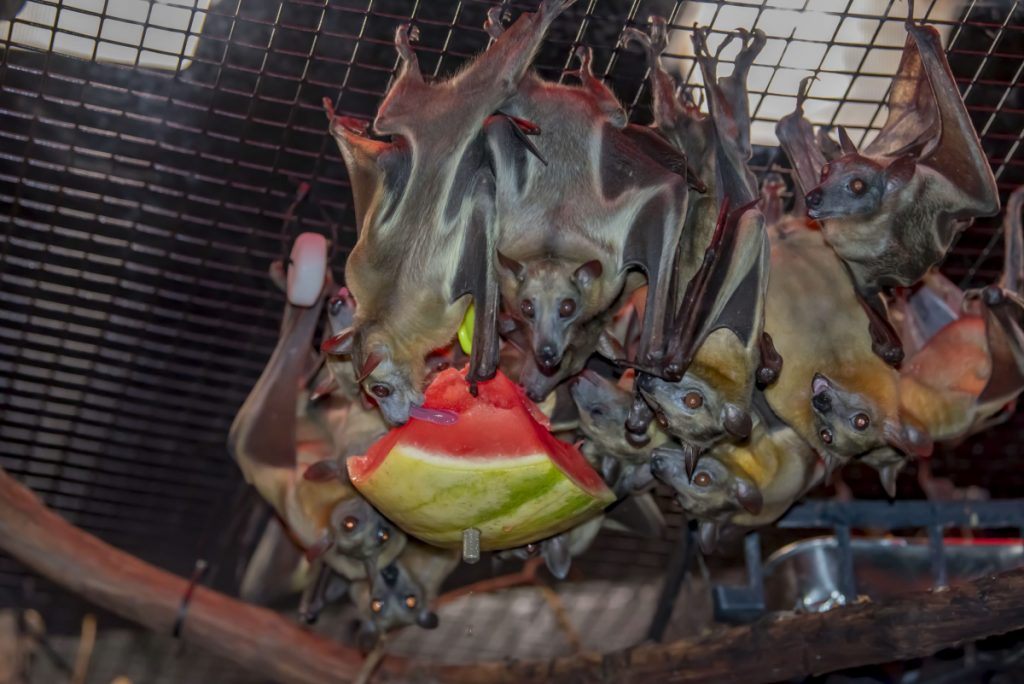
Their wingspan is 30-36 inches. Their wings are long and narrow, allowing them to fly long distances and not expend too much energy by flapping them a lot.
Dwarf Mongoose
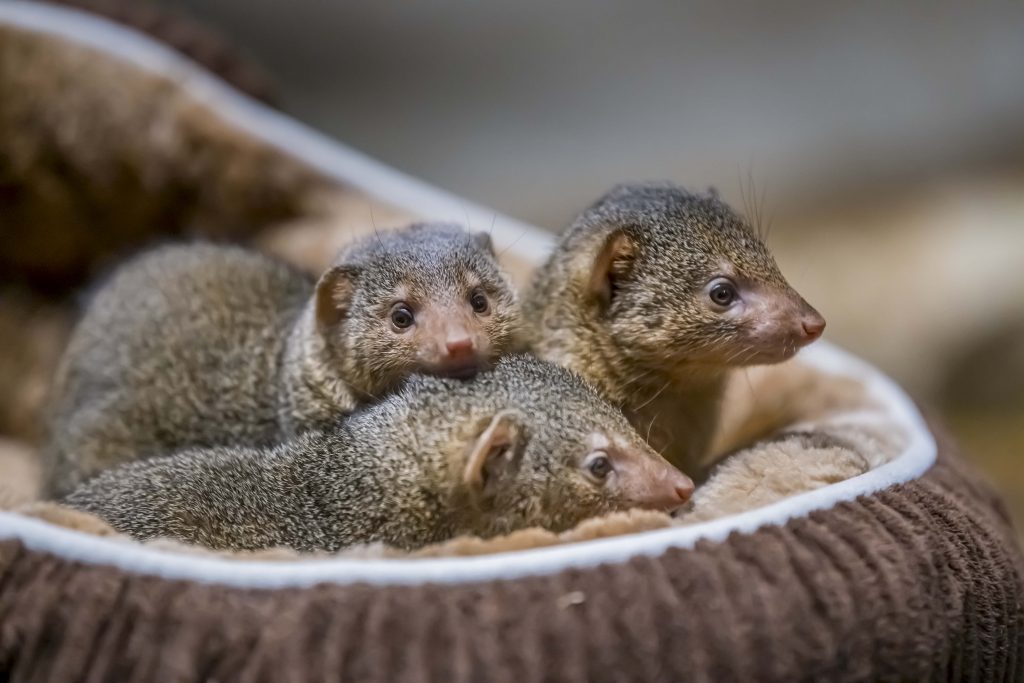
Fighting is very rare in the dwarf mongoose society. Sub-adults commonly care for the young while the adults go foraging for food. When members of the pack are apart, they keep in constant contact with a series of twitters and whistles.
Reticulated Giraffe
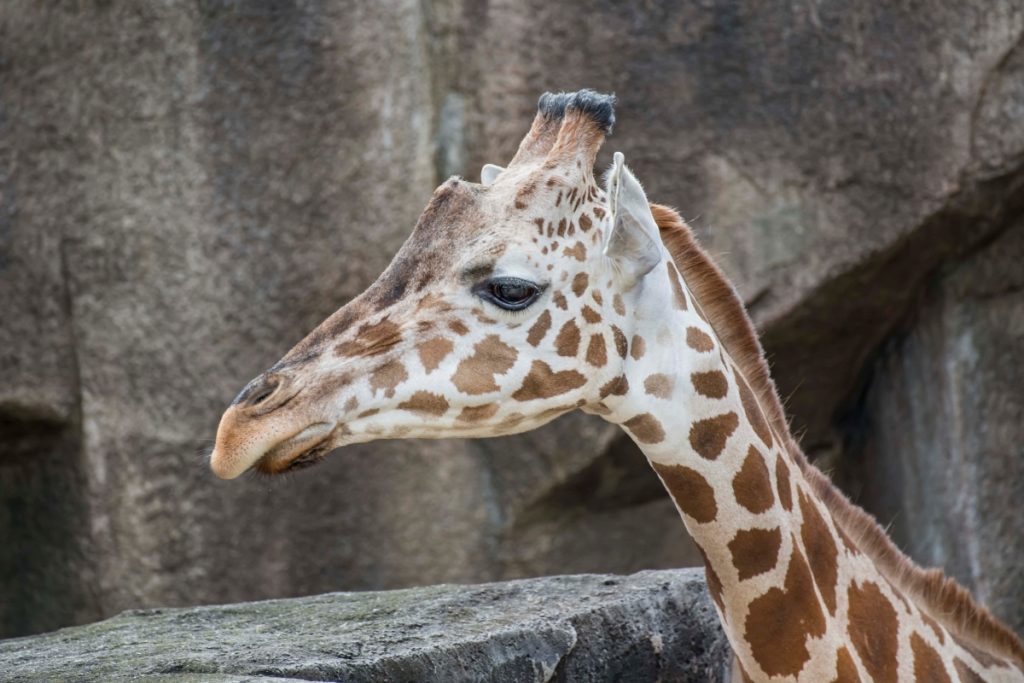
Giraffes only need 5 to 30 minutes of sleep in a 24-hour period! They often achieve that in quick naps that may last only a minute or two at a time. Giraffes can rest while standing, but they sometimes also lie down with their head resting on their rump. That’s a vulnerable position for a […]
North American River Otter
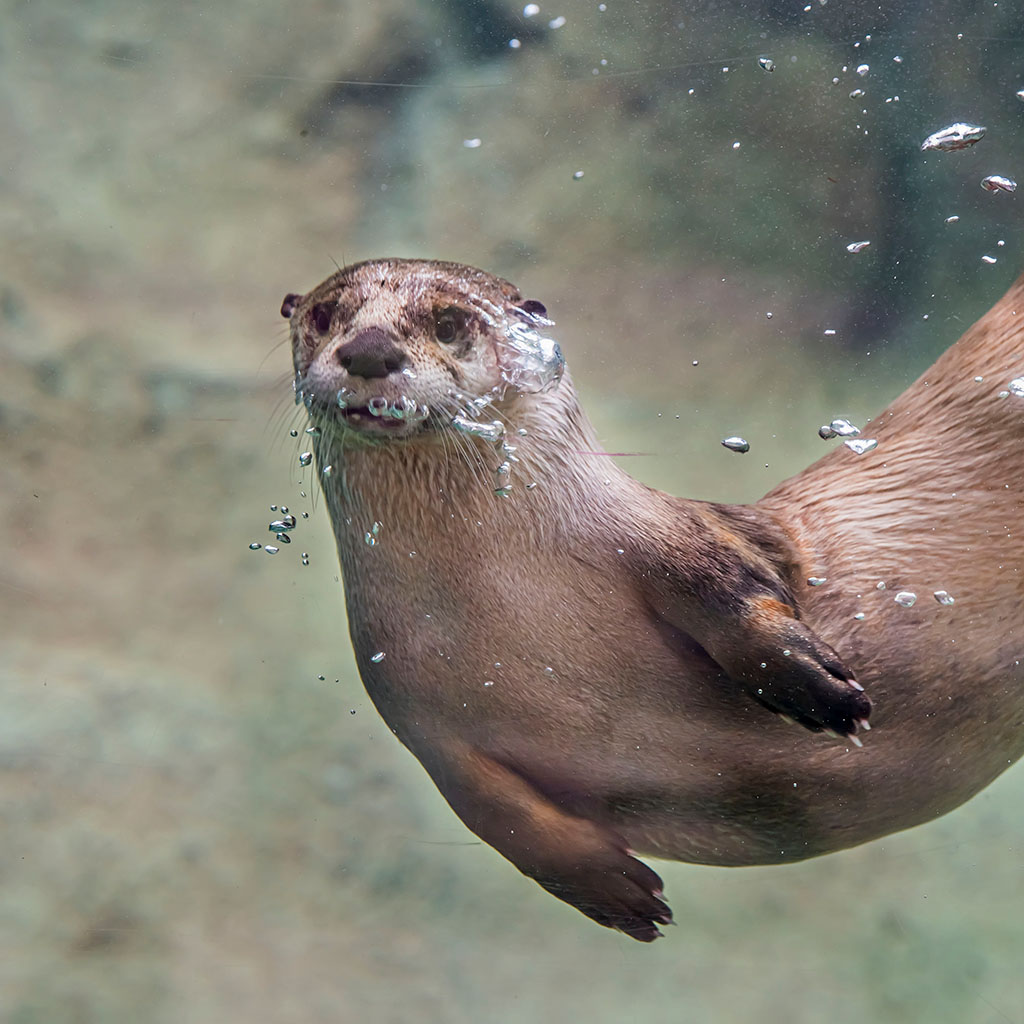
Though they live on land, they are well adapted for life in rivers and streams. Built for swimming, river otters have a streamlined body, short legs with webbed feet, dense fur that keeps them warm, a tapered tail, and small ears and nostrils that can close underwater.
Hoffmann’s Two-toed Sloth
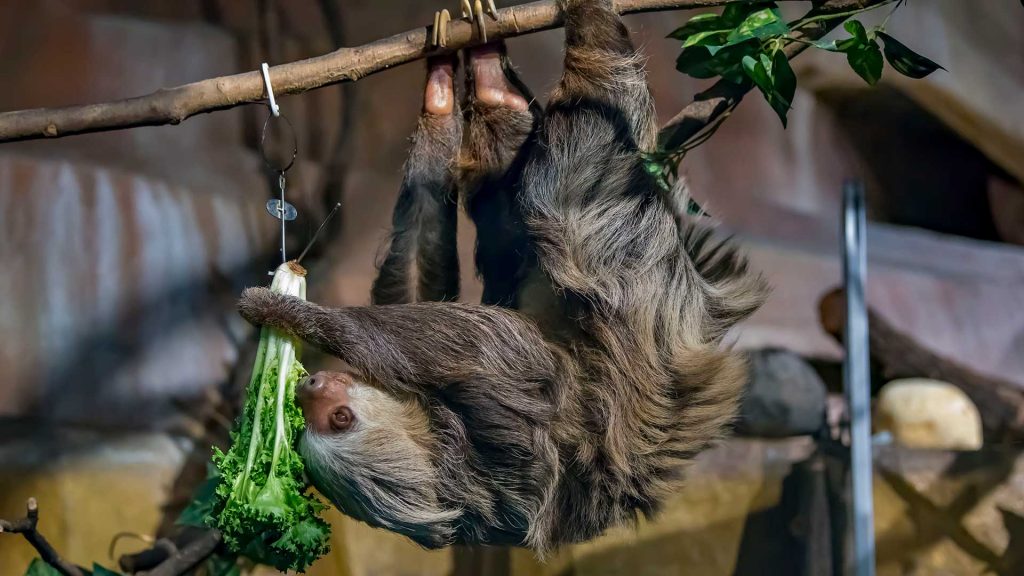
Almost entirely arboreal (tree-dwelling) creatures, two-toed sloths live high in the forest canopy of tropical rainforests. They can be found resting in the crowns of trees or the lianas (woody climbing vines) that are interwoven throughout the canopy treetops.
Common Waterbuck
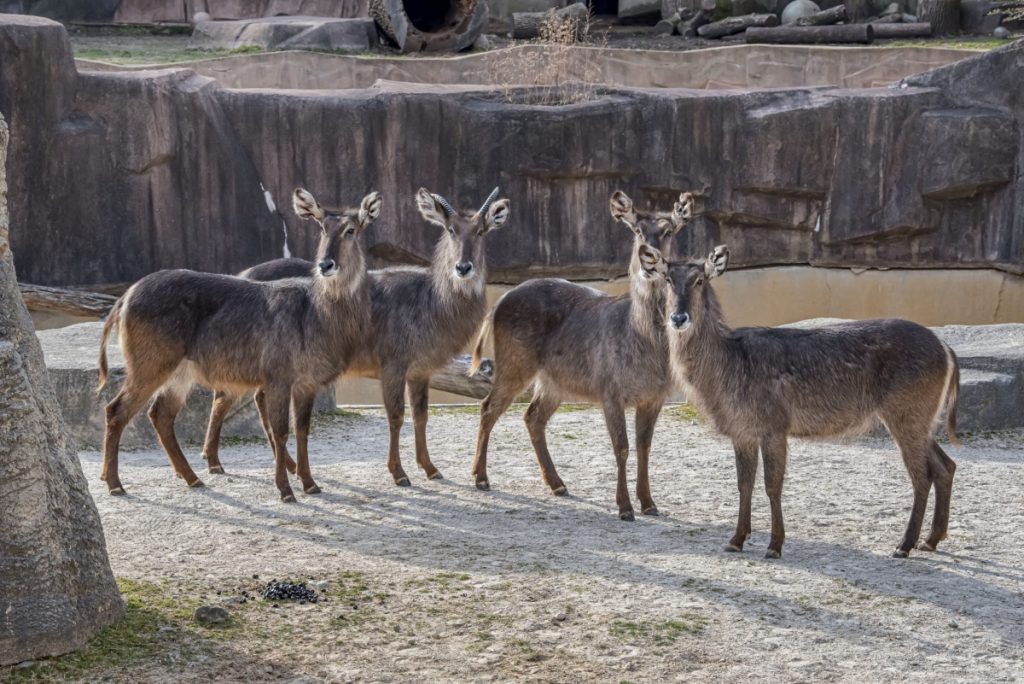
Their long-stranded hair seems to be waterproofed by skin glands as an adaptation to their frequent and lengthy stays in the water. It is generously covered with thin brownish, tar-like grease that has a distinct, turpentine-like odor.
Spotted Hyena
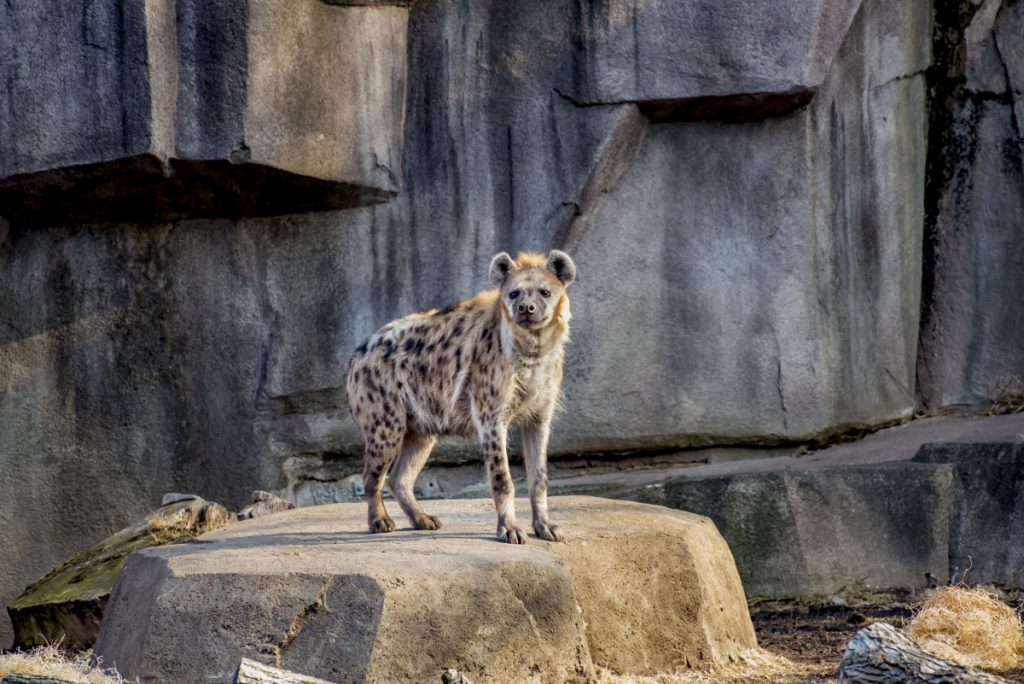
Spotted hyenas are extremely vocal animals. The well-known laughing sound is emitted by an animal that is being chased or attacked. A variety of whoops are made when the pack is getting ready for the hunt.
Serval
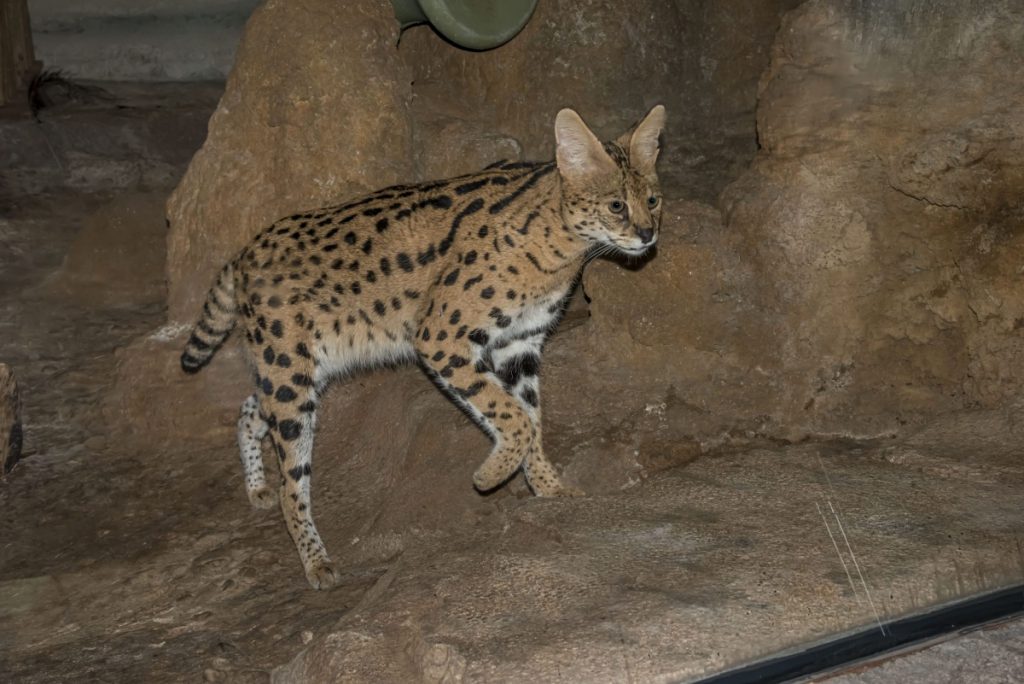
In proportion to its body, the serval has the longest legs in the cat family, enabling it to peer over tall vegetation to find prey. A serval can leap twice its own body length. A pounce may span 3-12 feet and may be over 3 feet high.
Greater Kudu
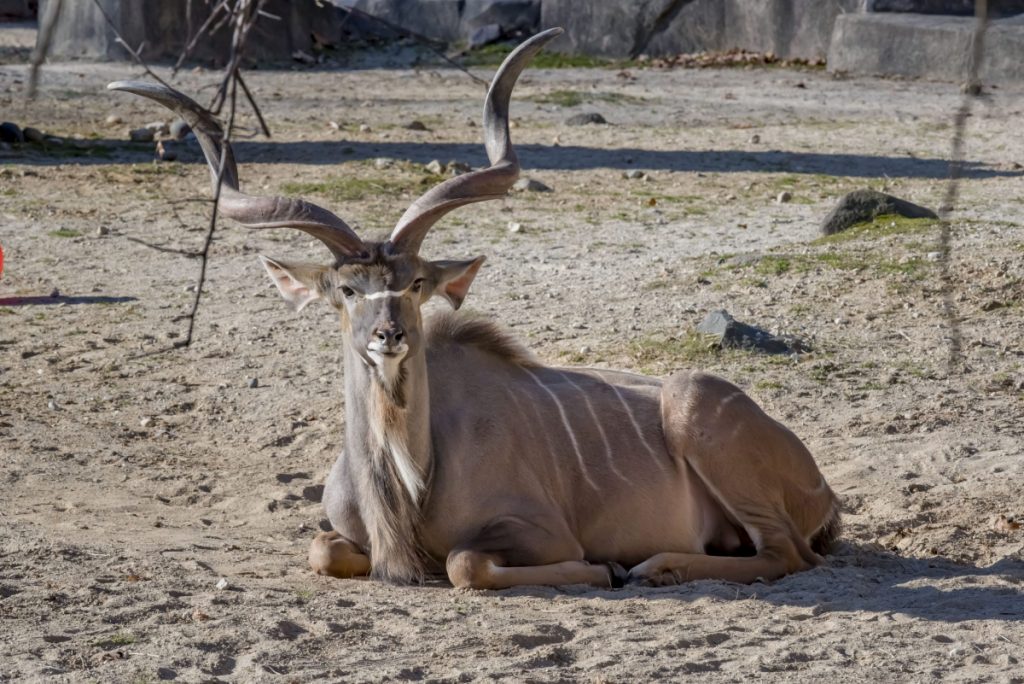
Greater Kudu are the second tallest antelope. Male greater kudu have horns that are nearly 4 feet tall with 2 1/2 inch twists. Despite their large size, kudu are accomplished jumpers, with records of heights of over 8.25 feet being cleared with ease.
Baird’s Tapir
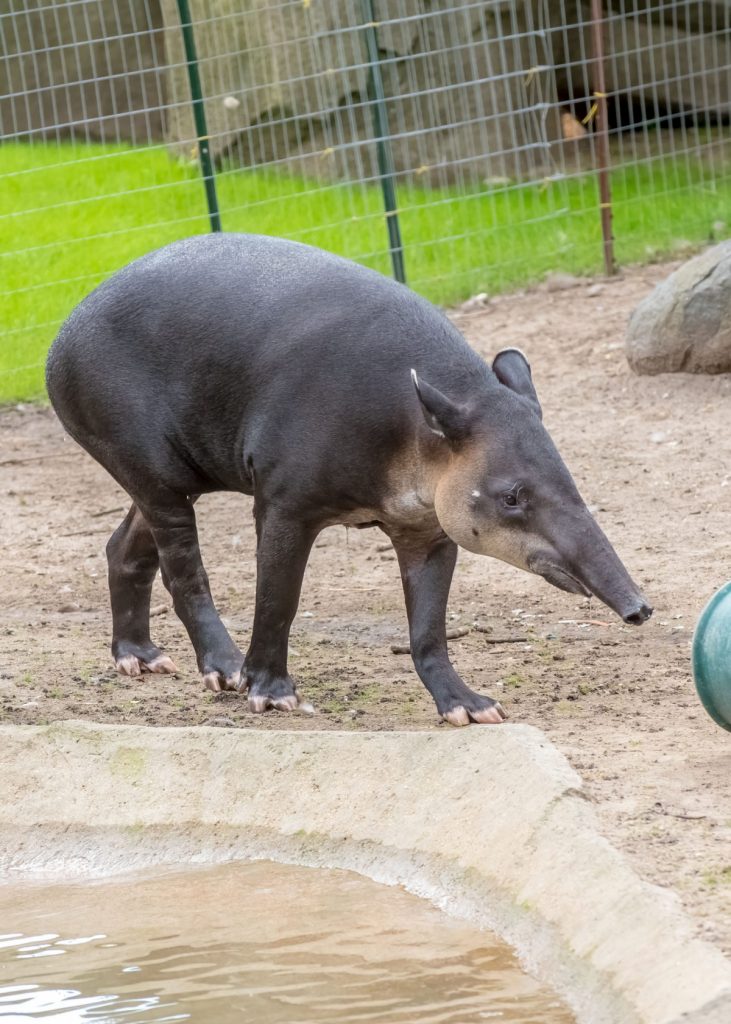
Baird’s tapir are the largest indigenous mammal in Central America and are well known for their elongated, flexible upper lip that is extended into a proboscis, resembling a shorter version of an elephant’s trunk.
Badger
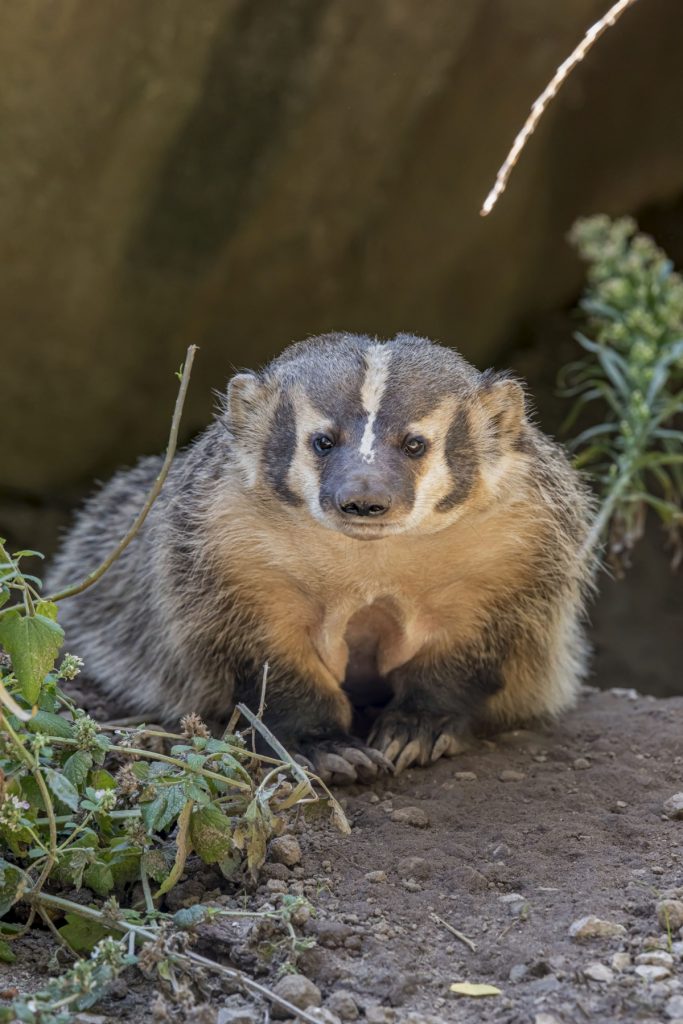
Badgers are fearless, feisty, solitary, nocturnal animals that spend much of their life underground. They are extremely fast, efficient diggers. They hunt underground and surprise their prey by digging directly into their burrows.
Bactrian Camel
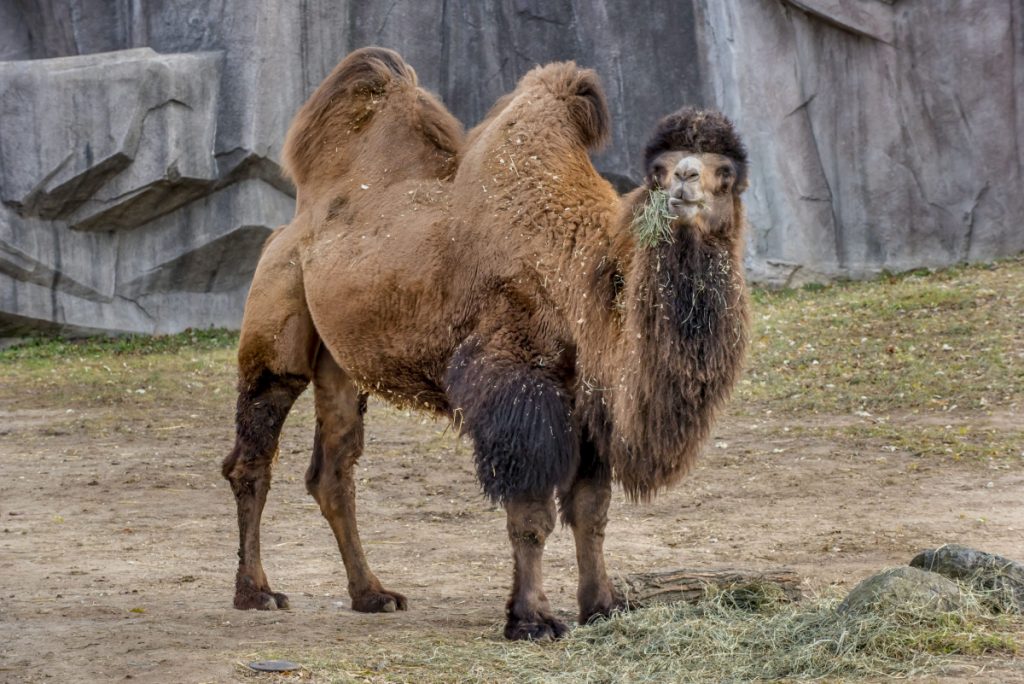
Bactrian camels can go without water for months at a time, but when water is available, they may drink up to 15 gallons of water at once. Long eyelashes and ears lined with hair provide protection from blowing sand.
Jaguar
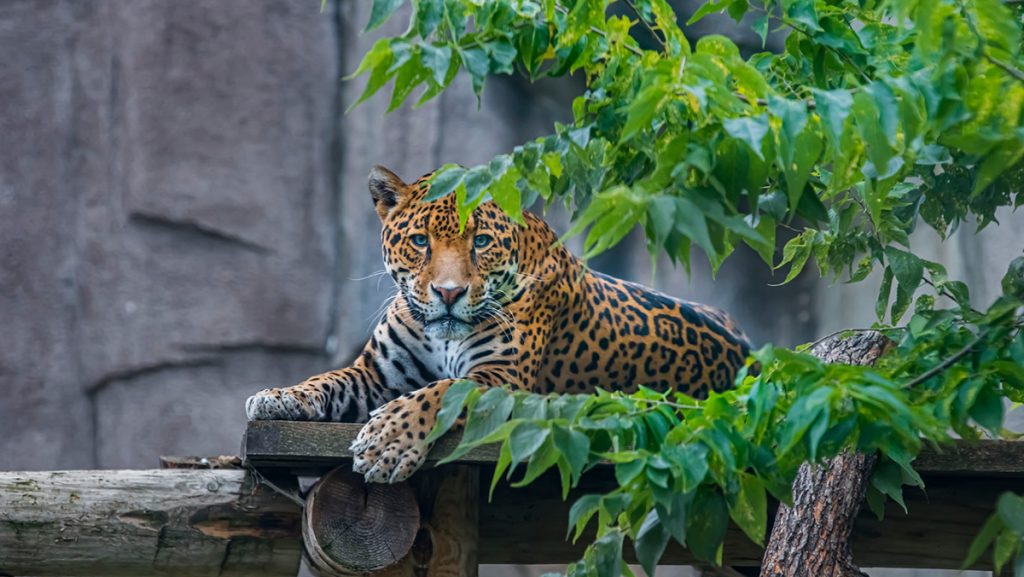
“Jaguar” comes from the native Indian name ‘yaguara,’ meaning ‘a beast that kills its prey with one bound.’ Jaguars are often found near water. They are good swimmers and frequently hunt near bodies of water.
Hippopotamus
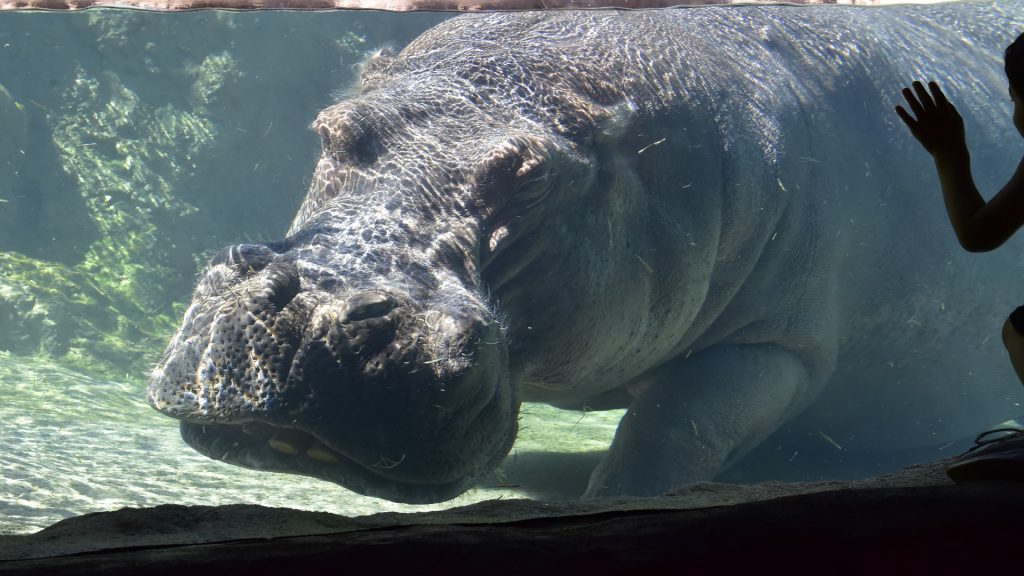
“Hippopotamus” comes from a Greek word meaning “river horse.” Hippos are not related to horses. Their closest living relative is the whale. An adult hippo can hold its breath underwater for up to 5 minutes!
Cheetah
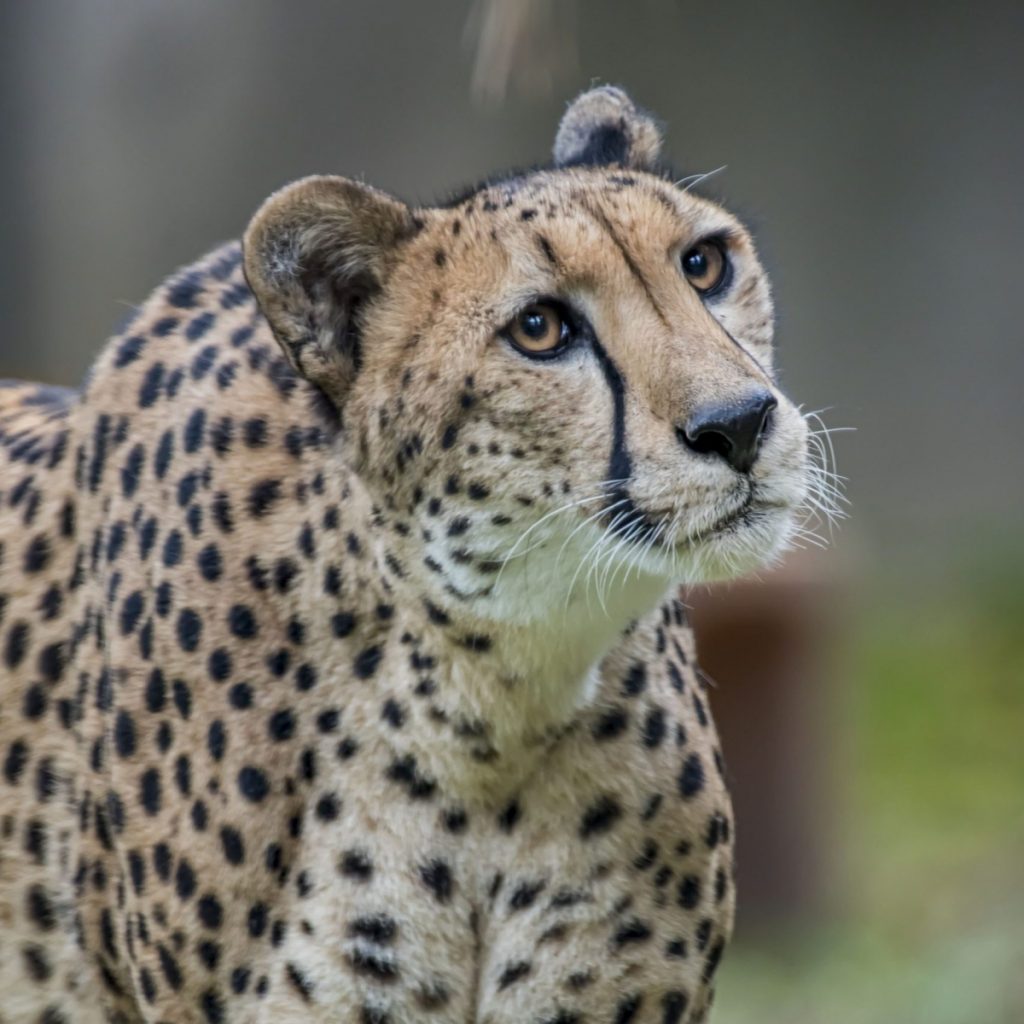
“Cheetah” comes from a Hindi word meaning “spotted one.” The cheetah has a leaner body and longer legs than other big cats. The black “teardrops” under each eye may enhance their vision by reducing glare from the sun.
African Lion
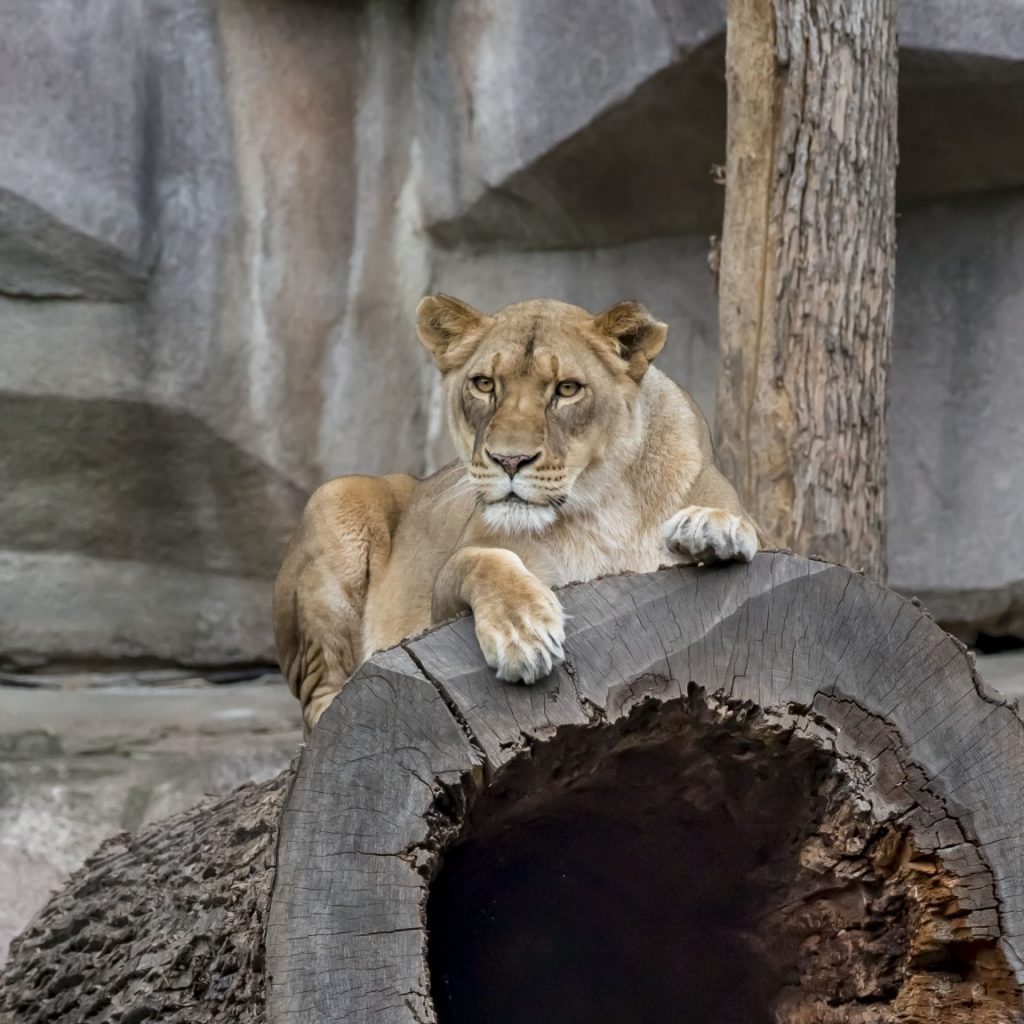
Lions are the only cats that live in large, social groups, called “prides.” A pride is made up of 3 to 30 lions. The pride consists of lionesses (mothers, sisters, and cousins), and their cubs, along with a few unrelated adult males.
Amur Tiger
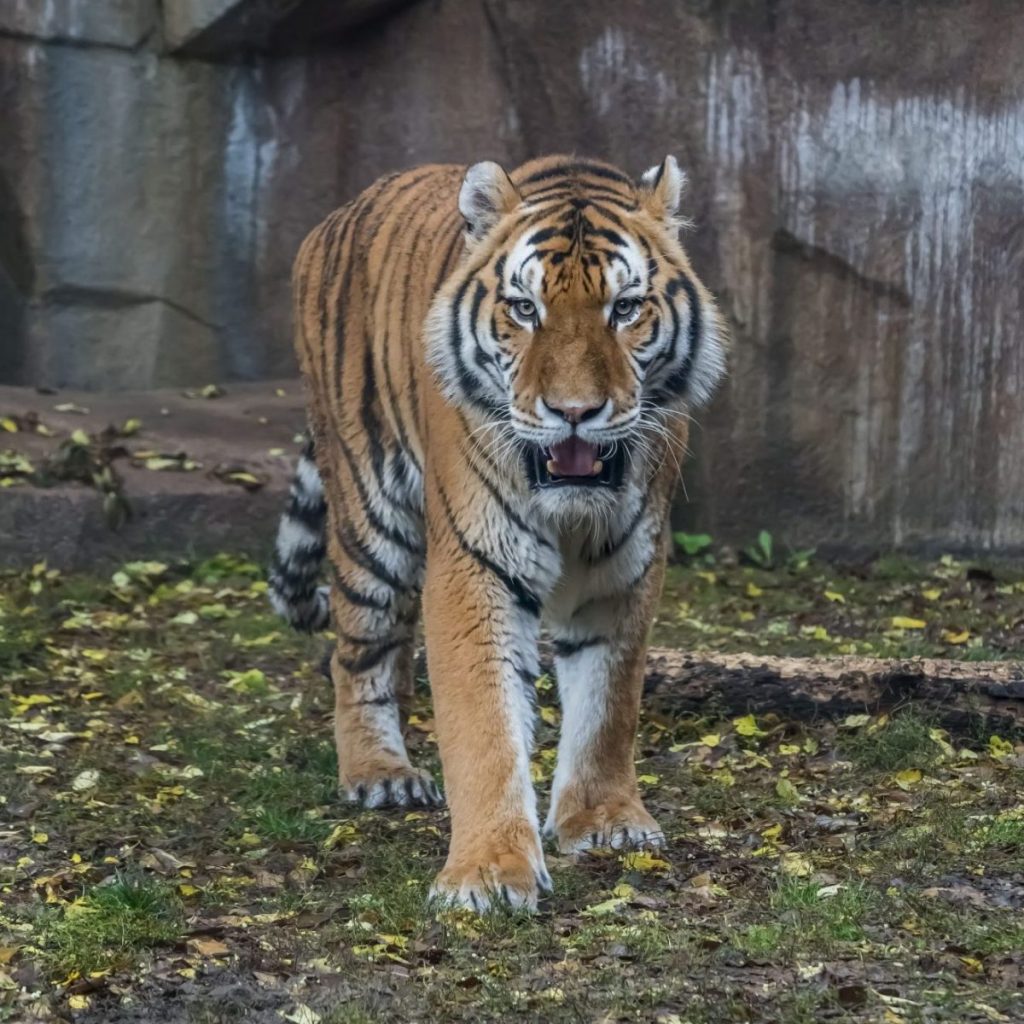
Amur tigers have the palest orange coats and fewest stripes of all tiger subspecies. No two tigers have the same pattern of stripes. Face markings can be used like human fingerprints for identification. Unlike many other cat species, tigers readily enter water and are good swimmers.
African Elephant
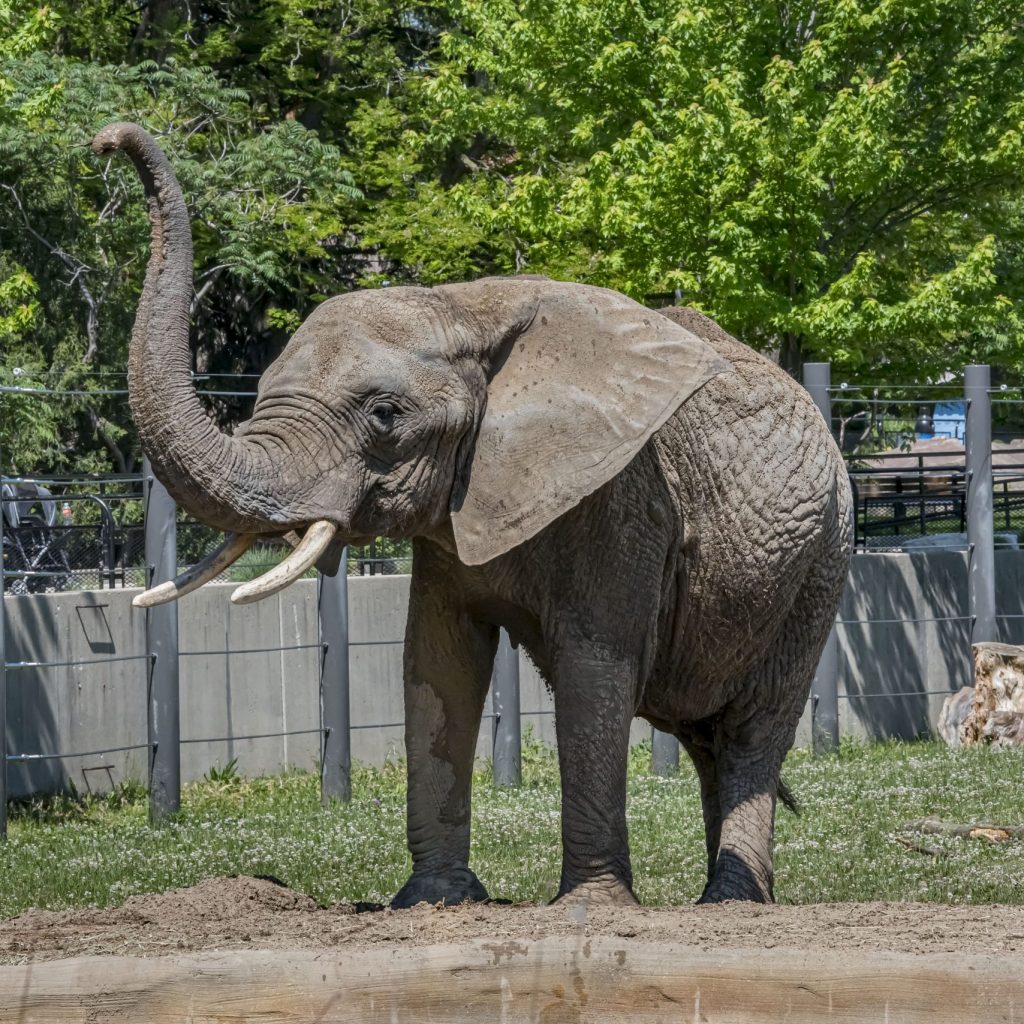
The elephants that live on the African savanna have a huge influence on their ecosystem. As their herds move across the savanna, they feed on trees, breaking them up, often by pulling them up by the roots and crushing them. Without this tree clearing, the savanna would quickly grow from grassland to woodland.
Alpaca
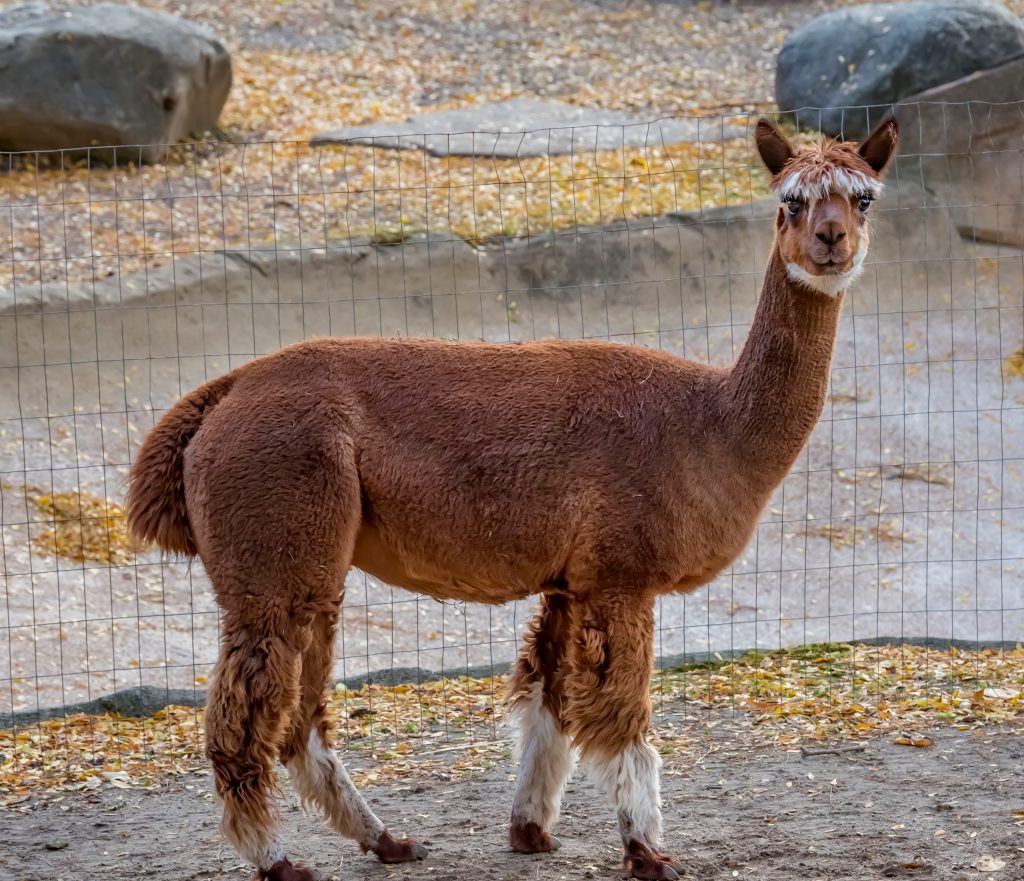
Alpacas have thick fur to keep warm in the cold winters in the Andes. Their hair is hollow and has insulative properties. The alpaca also has special stomach secretions that help it absorb 50 percent more nutrients than a sheep, allowing it to survive where there’s only poor-quality grass.
Golden Lion Tamarin
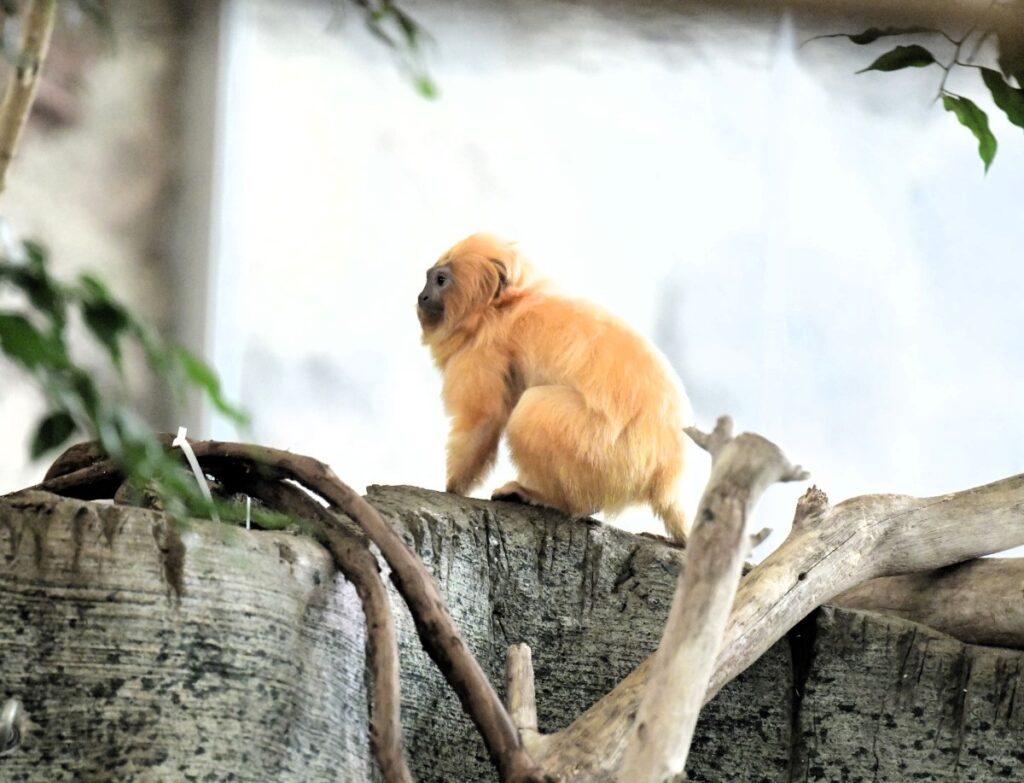
Golden lion tamarins have a unique tendency to give birth to twins. About 78 percent of all their births in the wild are twins, and the energetic demand of caring for two infants has shaped the social structure and cooperative breeding patterns prevalent in golden lion tamarins. The vibrant color of their coat is thought […]
Cotton-top Tamarin
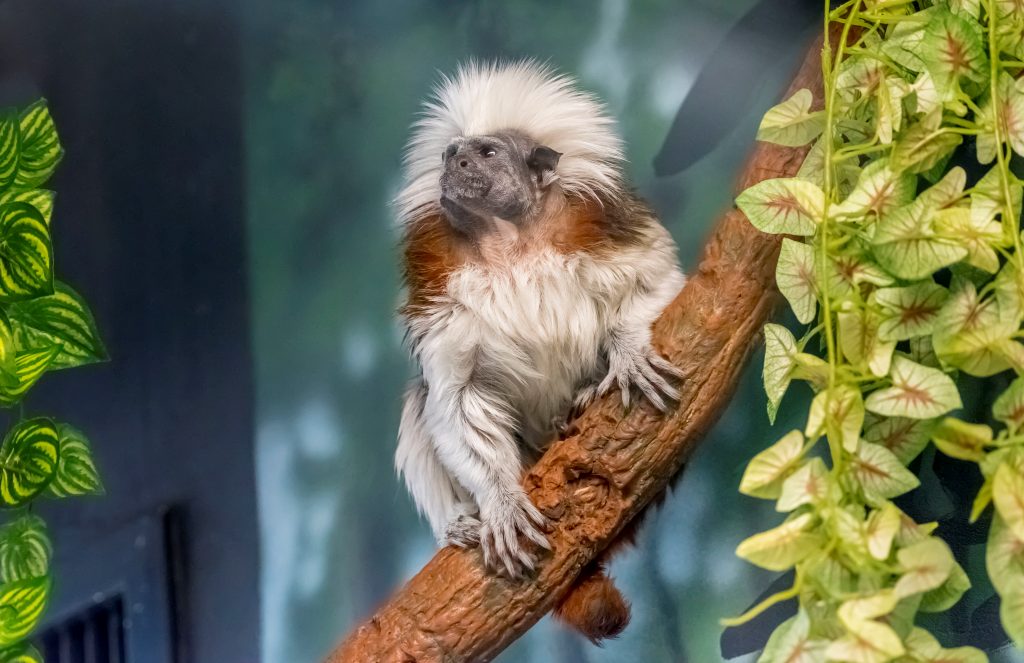
Cotton-top tamarins spend a considerable amount of time grooming throughout the day during periods of rest (grooming is a social tool to create and maintain bonds between primates). Also, the brain of a cotton-top is proportionately larger than a human brain.
Black-handed Spider Monkey
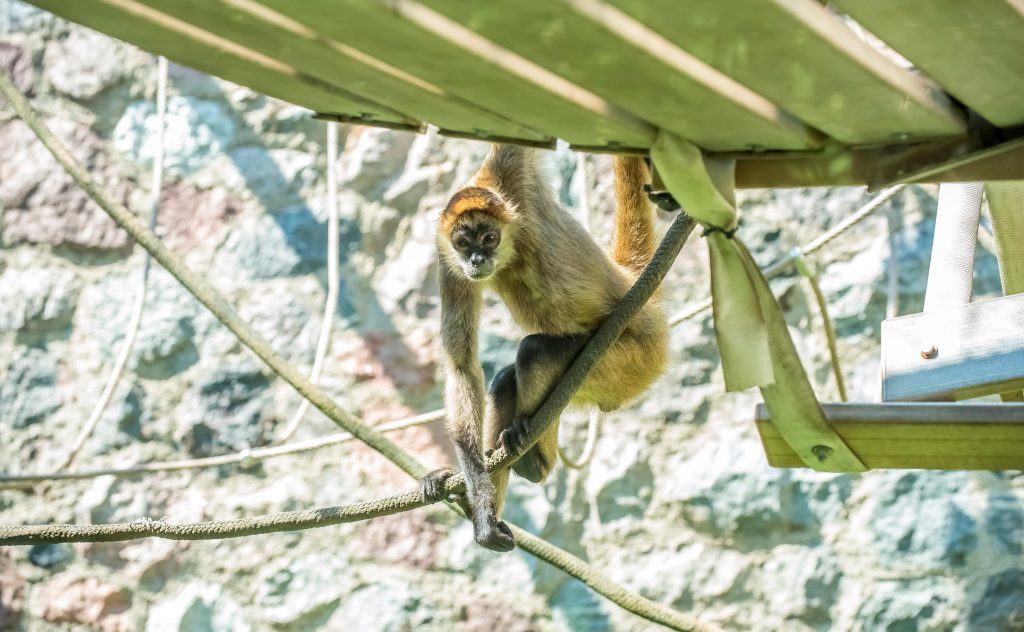
Spider monkeys don’t have thumbs on their hands — their four elongated fingers act as a hook when moving through the trees. Their prehensile tail acts like a fifth limb and can fully support the monkey’s body for extended periods. The hairless sensory area on the underside of the tip of their tail can pick […]
Siamang
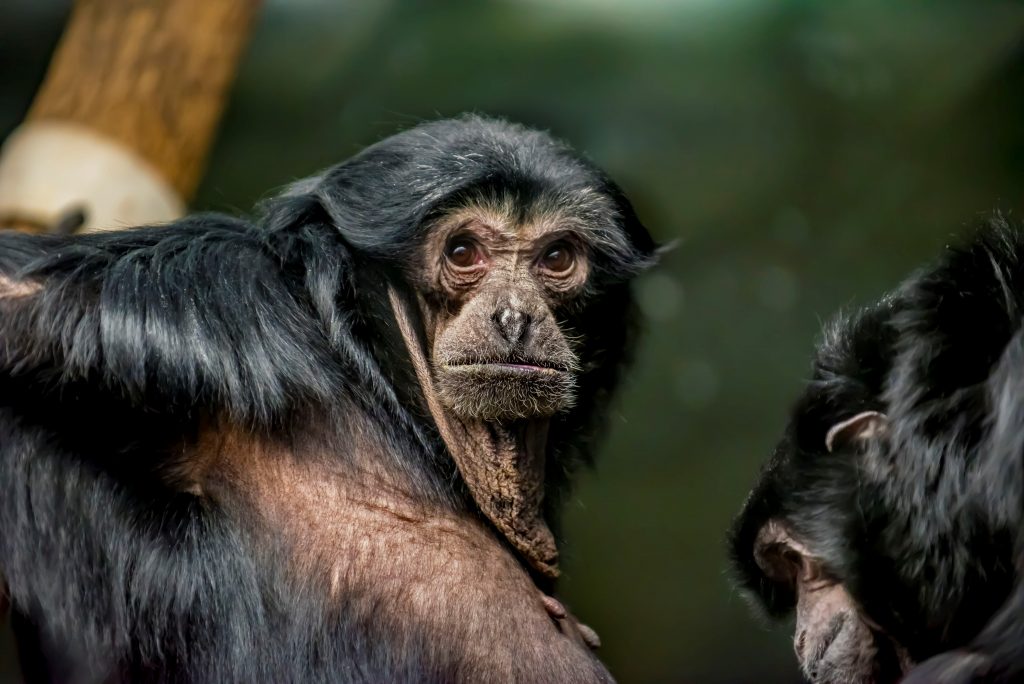
Siamang are the largest of the 14 species of gibbons. They’re very acrobatic and agile, with extra-long arms that help them cover up to 10 feet in a single swing. If they’re not swinging through the trees, they’re very likely walking along branches with their arms outstretched to help them keep their balance.
Orangutan
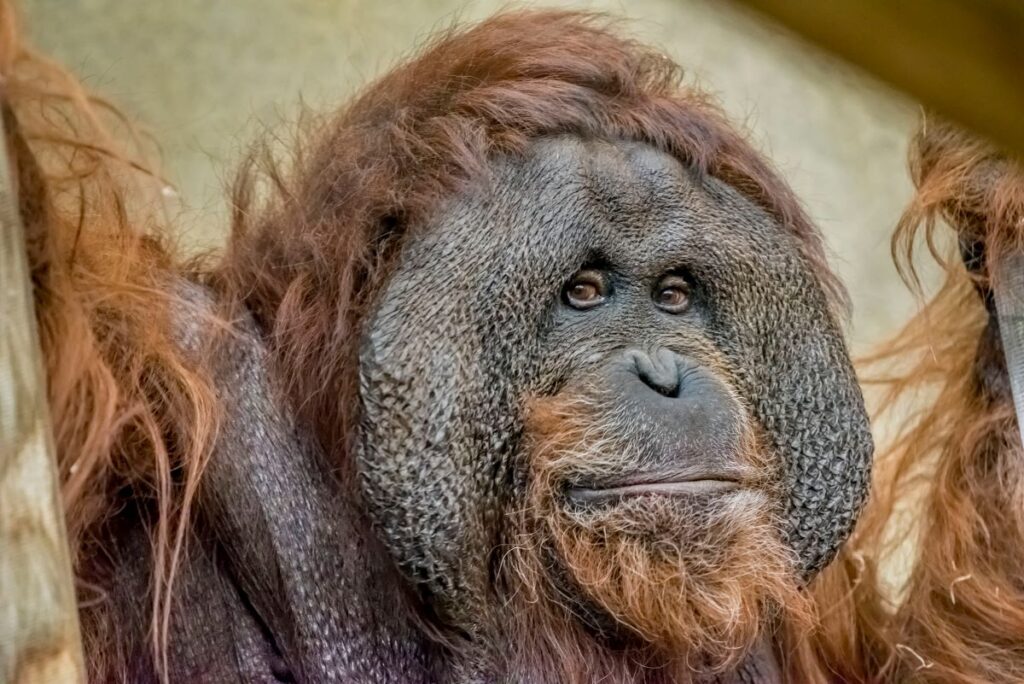
Orangutans are the largest tree-dwelling animal, and their name means “person of the forest” in Malay. Orangutans and humans share 97 percent of the same genetic material. Solitary animals, they rarely encounter others of their kind in the wild unless sharing a fruiting tree or mating.
Japanese Macaque
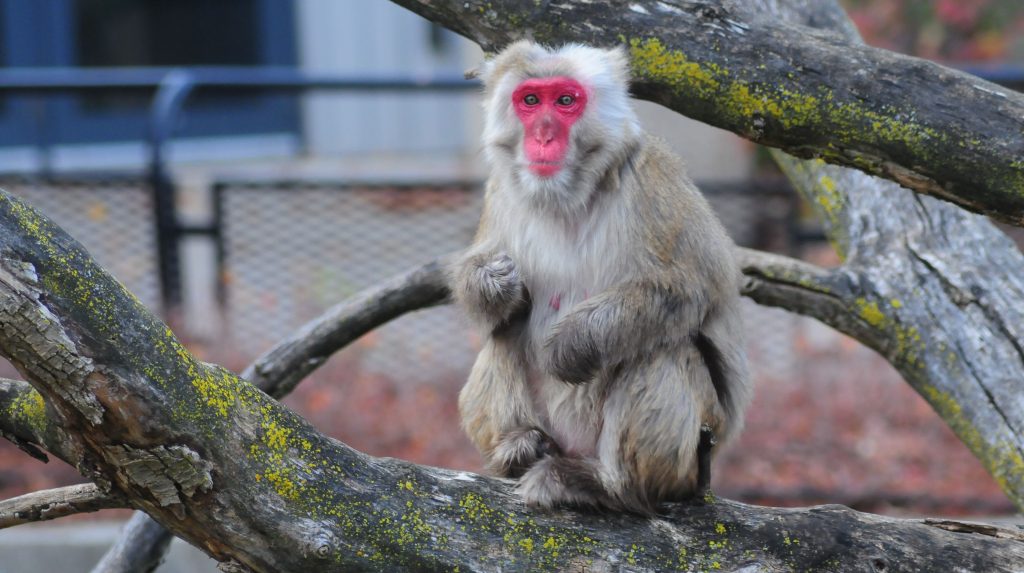
Also called snow monkeys, their fur is a unique adaptation to cold, as fur thickness increases as habitat temperature decreases. This allows the monkey to cope with winter temperatures as low as -4° F. It’s the only animal — other than humans and raccoons — that’s known to wash its food before eating it.
Western Lowland Gorilla
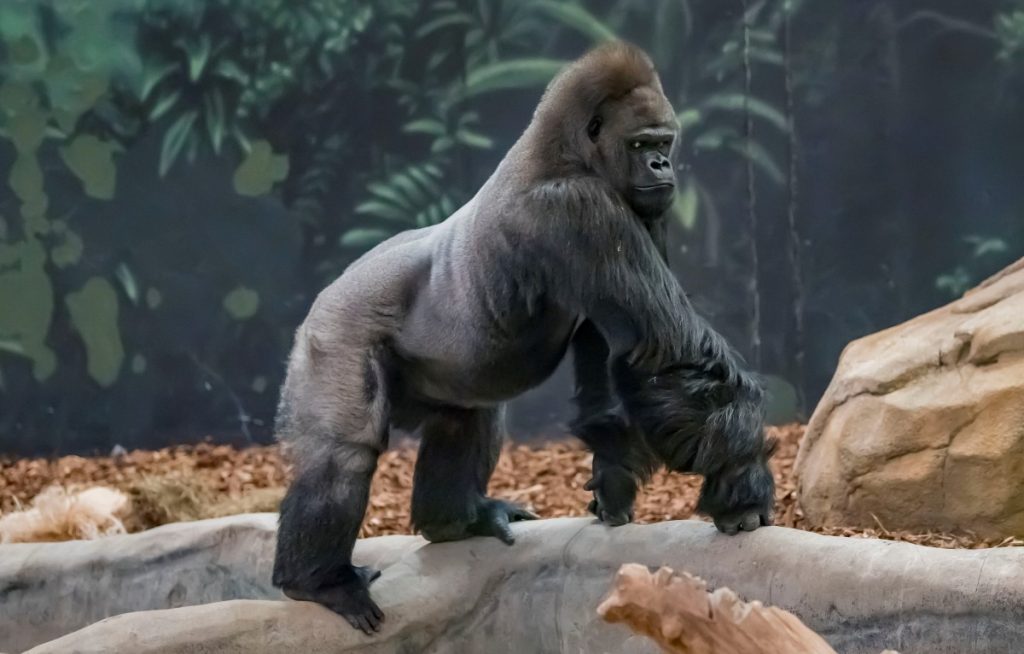
An adult gorilla’s upper body strength is six times more powerful than that of an adult human. Gorillas also have longer arms than legs — their arm span is actually larger than their height. Although they can stand and walk upright for short distances, they prefer to walk in a quadrupedal fashion, supporting their weight […]
Goeldi’s Monkey
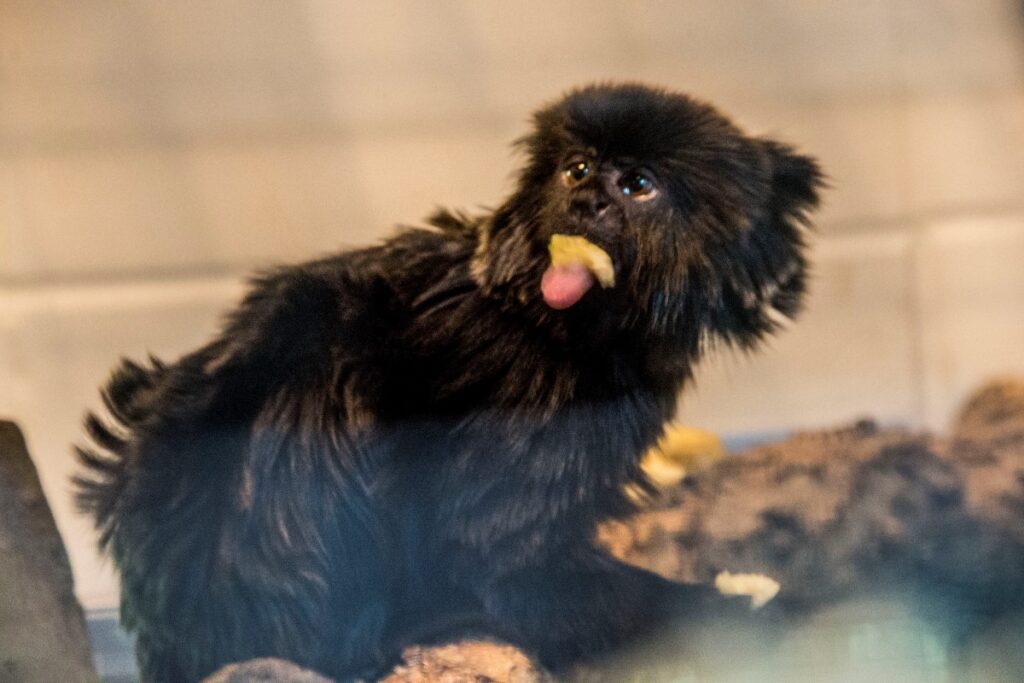
Goeldi’s monkeys gallop through the forest on all fours and are able to leap distances of up to 12 feet between branches — quite spectacular for such a small monkey! While most of their time is spent in the trees, they will come down to the ground, especially when looking for insects or vertebrates. They […]
Eastern Black and White Colobus Monkey
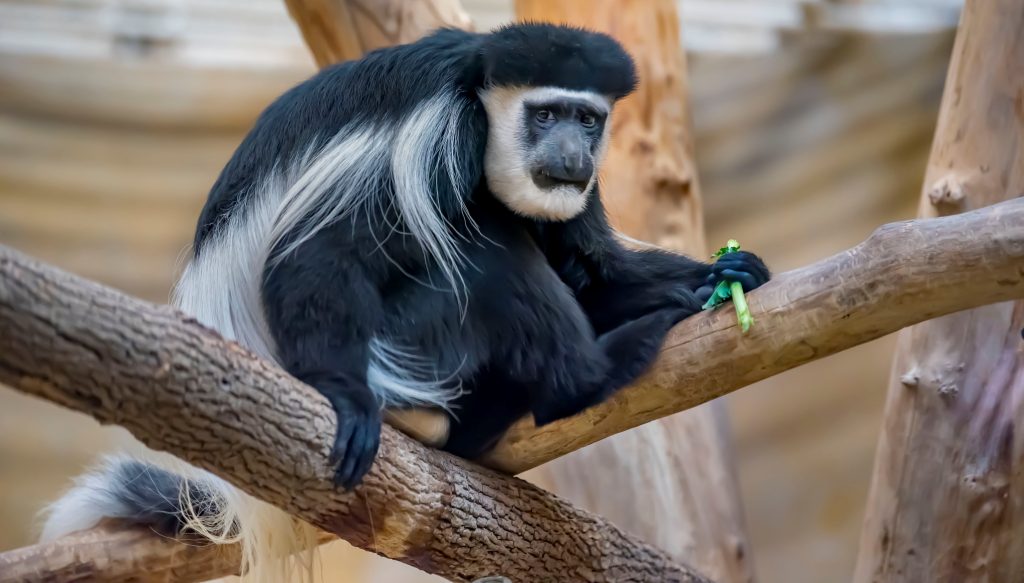
The eastern black and white colobus monkey is the largest of the African leaf-eating monkeys. Babies are born pure white and attain their black and white coloration at about six months of age. Colobus monkeys have unusual stomachs, with three of four different regions, similar to the digestive systems of cows.
Fennec Fox
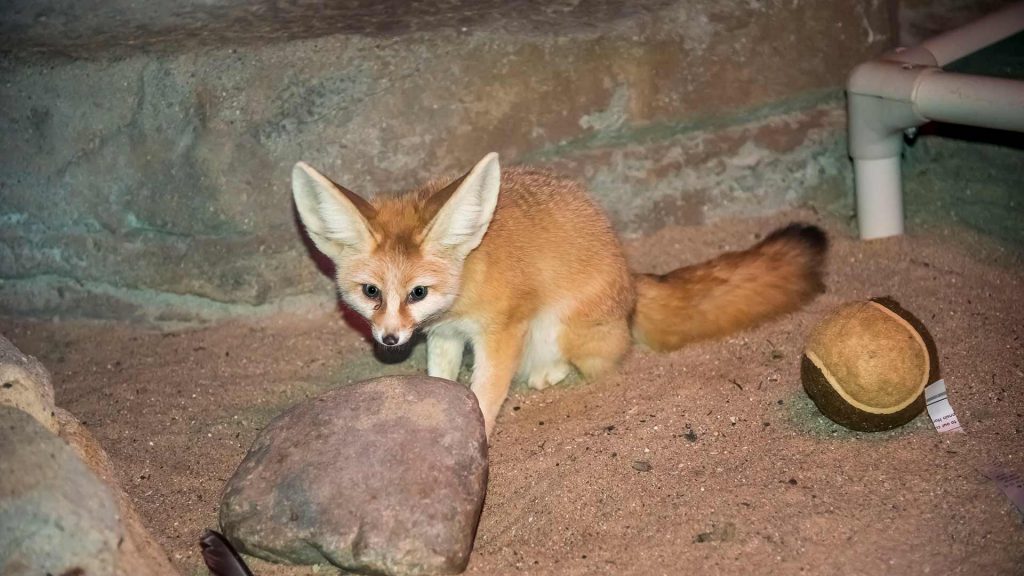
The fennec fox is the smallest of all the world’s foxes. The ears of a fennec fox can measure to be roughly 6 inches. Living in the desert, the fennec fox is able to go long periods without water.
Bonobo
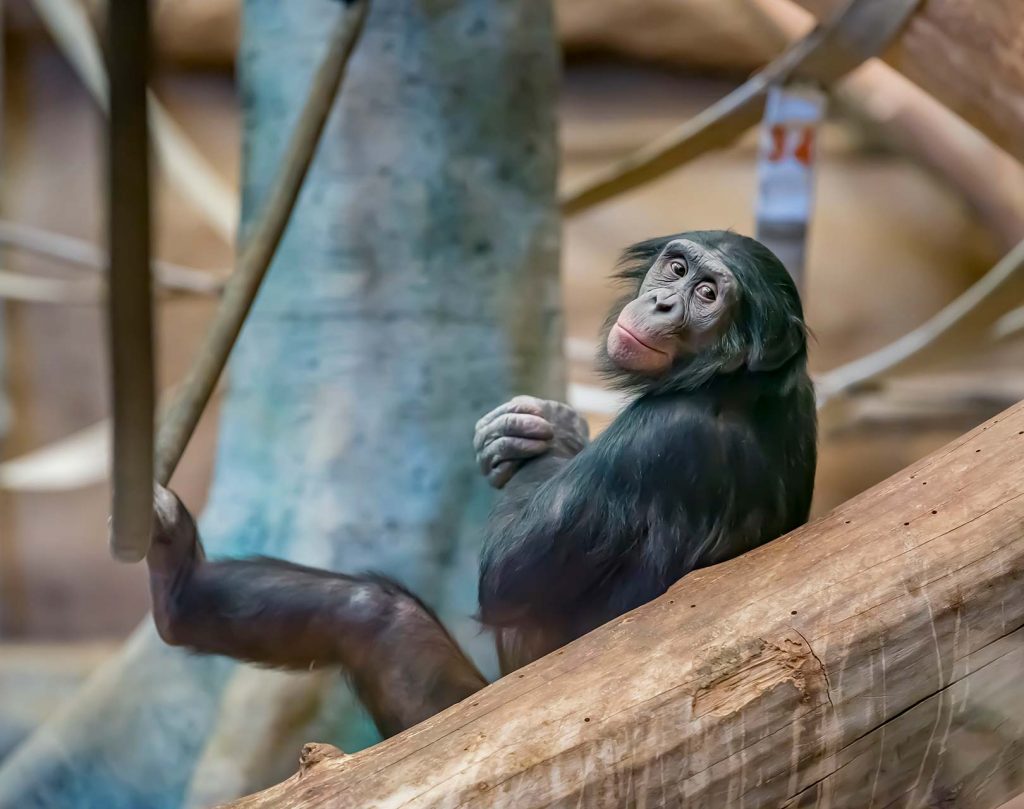
Bonobos and chimpanzees share 98.7 percent of their DNA with humans, making them and chimpanzees the closest living relatives to humans. Bonobos are led by the females and tend to share a peaceful society. The Milwaukee County Zoo is currently home to the largest group of bonobos in North America.
Eastern Bongo
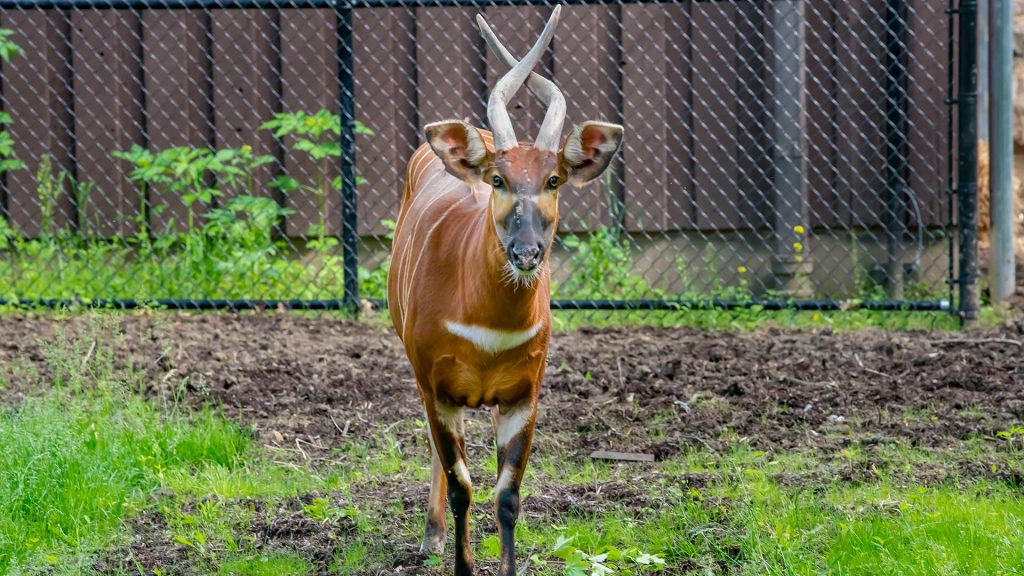
The Eastern, or mountain, bongo is the largest and heaviest forest antelope. Both female and male Eastern bongos have spiraled, u-shaped horns that grow up to 40 inches long, which they keep their entire lives. Since they live in dense forests, the horns of Eastern bongos usually point backward, allowing them to better navigate their […]
Red Panda

The red panda is not closely related to giant pandas. Red pandas are housed in Big Cat Country because they are geographically from the same wild habitats as some of the “real” big cats. Red Pandas at the Zoo can often be seen climbing high on their habitat platforms.
Scottish Highland
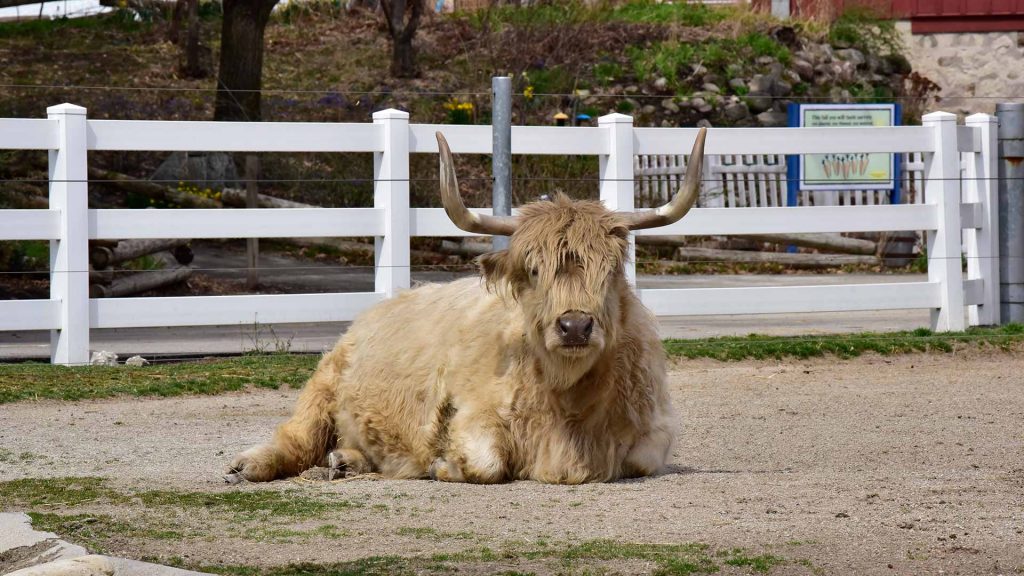
The highland breed is the oldest registered breed in the world. The coat of a Scottish highland cow is distinctive, with hair sometimes reaching 13 inches. Their long horns help them forage for food during the winter.
Grizzly Bear
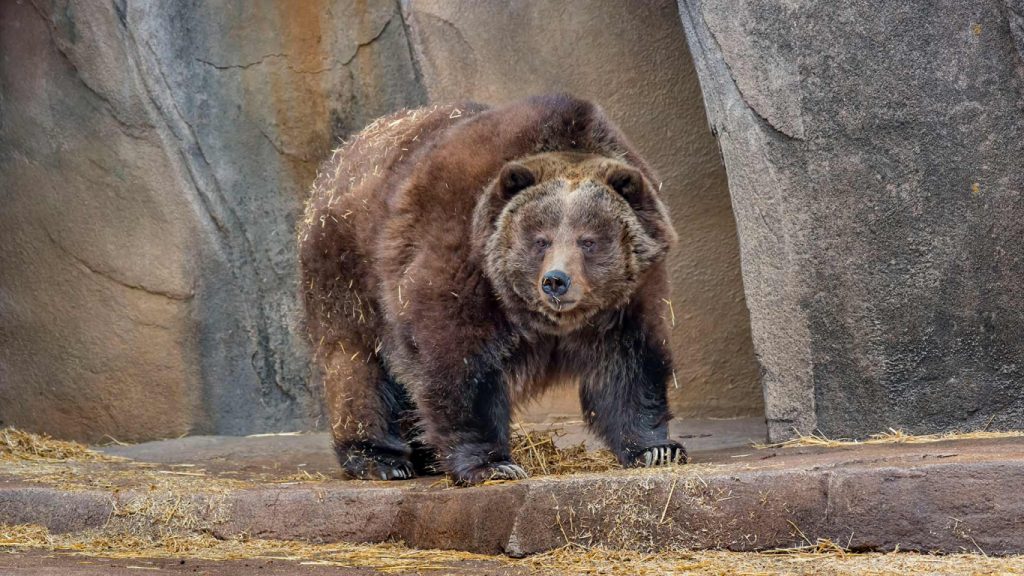
Grizzlies can run up to 30 miles an hour. A mother grizzly bear is extremely protective of her cubs. Grizzly bears congregate together during summer spawning when the salmon runs upstream.